|
|
||||||||||||||||||||||||||||||||||||||||||||||||||||||
|
HOME
|
US Navy -
ships
|
US Navy - air
units
|
USMC - air
units
|
International
Navies
|
Weapon Systems
|
Special Reports |
||||||||||||||||||||||||||||||||||||||||||||||||||||||
|
Surface Vessel / Submarine Weapon System UGM / BGM / RGM-109 Tomahawk Land Attack Missile (TLAM) |
||||||||||||||||||||||||||||||||||||||||||||||||||||||
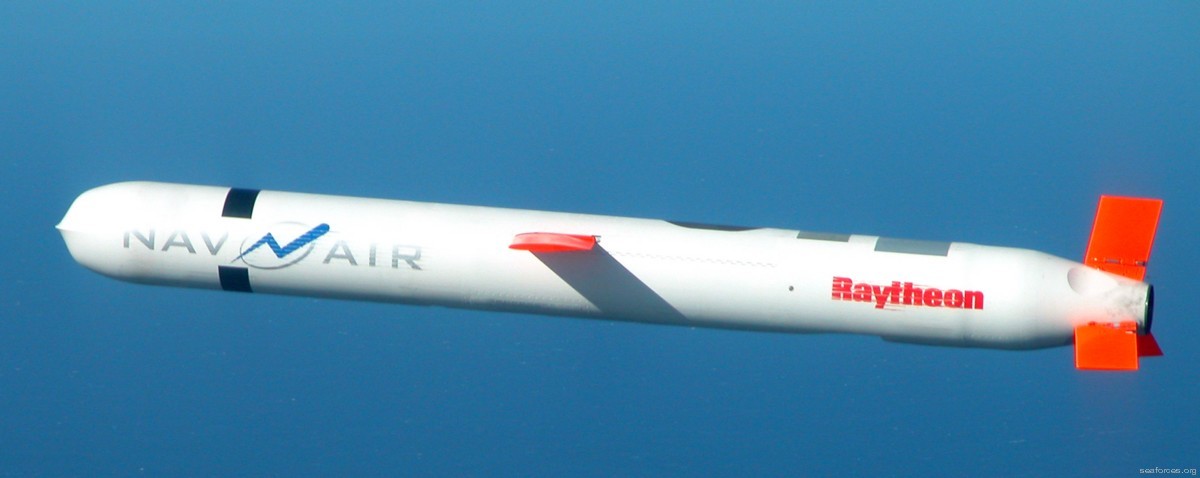 |
||||||||||||||||||||||||||||||||||||||||||||||||||||||
|
The Tomahawk Land Attack Missile (TLAM) is a long-range,
all-weather, subsonic cruise missile that is primarily used by the
United States Navy and Royal Navy in ship and submarine-based
land-attack operations. Introduced by General Dynamics in the 1970s,
it was initially designed as a medium- to long-range, low-altitude
missile that could be launched from a surface platform. Since then,
it has been upgraded several times with guidance systems for
precision navigation. In 1992–1994, McDonnell Douglas Corporation
was the sole supplier of Tomahawk Missiles and produced Block II and
Block III Tomahawk missiles and remanufactured many Tomahawks to
Block III specifications. In 1994, Hughes outbid McDonnell Douglas
Aerospace to become the sole supplier of Tomahawk missiles. It is
now manufactured by Raytheon. In 2016, the U.S. Department of
Defense purchased 149 Tomahawk Block IV missiles for $202.3 million. The Tomahawk missile family consists of a number of subsonic, jet engine-powered missiles designed to attack a variety of surface targets. Although several launch platforms have been deployed or envisaged, only sea (both surface ship and submarine) launched variants are currently in service. Tomahawk has a modular design, allowing a wide variety of warhead, guidance, and range capabilities. The Tomahawk project was originally awarded to Applied Physics Laboratory near Laurel, Maryland by the US Navy. James H. Walker led a team of scientists to design and build this new long range missile. The original design, updated with advanced technology, is still used today. Variants: There have been several variants of the BGM-109 Tomahawk employing various types of warheads: BGM-109A Tomahawk Land Attack Missile - Nuclear (TLAM-N) with a W80 thermonuclear weapon. Retired from service sometime between 2010 and 2013. Reports from early 2018 state that the U.S. Navy is considering (re)introducing a (yet unknown type of) nuclear-tipped cruise missile into service RGM/UGM-109B Tomahawk Anti Ship Missile (TAS-M) active radar homing anti-ship missile variant; withdrawn from service in the 1990s BGM-109C Tomahawk Land Attack Missile - Conventional (TLAM-C) with a unitary warhead. This was initially a modified Bullpup warhead BGM-109D Tomahawk Land Attack Missile - Dispenser (TLAM-D) with cluster munitions. RGM/UGM-109E Tomahawk Land Attack Missile (TLAM Block IV) improved version of the TLAM-C. BGM-109G Ground Launched Cruise Missile (GLCM) with a W84 nuclear warhead; withdrawn from service in 1991 AGM-109H/L Medium Range Air to Surface Missile (MRASM) a shorter range, turbojet powered air-launched cruise missile with cluster munitions; never entered service, cost US$569,000 (1999) Ground-launched cruise missiles (GLCM) and their truck-like launch vehicles were employed at bases in Europe; they were withdrawn from service to comply with the 1987 Intermediate-Range Nuclear Forces Treaty. Many of the anti-ship versions were converted into TLAMs at the end of the Cold War. The Block III TLAMs that entered service in 1993 can fly farther and use Global Positioning System (GPS) receivers to strike more precisely. Block III TLAM-Cs retain the DSMAC II navigation system, allowing GPS only missions, which allow for rapid mission planning, with some reduced accuracy, DSMAC only missions, which take longer to plan but terminal accuracy is somewhat better, and GPS aided missions which combine both DSMAC II and GPS navigation which provides the greatest accuracy. Block IV TLAMs are completely redesigned with an improved turbofan engine. The F107-402 engine provided the new Blk III with a throttle control, allowing in-flight speed changes. This engine also provided better fuel economy. The Block IV TLAMs have enhanced deep-strike capabilities and are equipped with a real-time targeting system for striking fleeing targets. Additionally, the Block IV missiles have the capabilities to be retargeted inflight, and the ability to transmit, via satcom, an image immediately prior to impact to assist in determining if the missile was attacking the target and the likely damage from the attack. Upgrades: A major improvement to the Tomahawk is network-centric warfare-capabilities, using data from multiple sensors (aircraft, UAVs, satellites, foot soldiers, tanks, ships) to find its target. It will also be able to send data from its sensors to these platforms. It will be a part of the networked force being implemented by the Pentagon. Tomahawk Block II variants were all tested during January 1981 to October 1983. Deployed in 1984, some of the improvements included: an improved booster rocket, cruise missile radar altimeter, and navigation through the Digital Scene Matching Area Corellator (DSMAC). Tomahawk Block III introduced in 1993 added time-of-arrival control and improved accuracy for Digital Scene Matching Area Correlator (DSMAC) and jam-resistant GPS, smaller, lighter WDU-36 warhead, engine improvements and extended missile's range. Tactical Tomahawk Weapons Control System (TTWCS) takes advantage of a loitering feature in the missile's flight path and allows commanders to redirect the missile to an alternative target, if required. It can be reprogrammed in-flight to attack predesignated targets with GPS coordinates stored in its memory or to any other GPS coordinates. Also, the missile can send data about its status back to the commander. It entered service with the US Navy in late 2004. The Tactical Tomahawk Weapons Control System (TTWCS) added the capability for limited mission planning on board the firing unit (FRU). Tomahawk Block IV introduced in 2006 adds the strike controller which can change the missile in flight to one of 15 preprogrammed alternate targets or redirect it to a new target. This targeting flexibility includes the capability to loiter over the battlefield awaiting a more critical target. The missile can also transmit battle damage indication imagery and missile health and status messages via the two-way satellite data link. Firing platforms now have the capability to plan and execute GPS-only missions. Block IV also has an improved anti-jam GPS receiver for enhanced mission performance. Block IV includes Tomahawk Weapons Control System (TTWCS), and Tomahawk Command and Control System (TC2S). On 16 August 2010, the Navy completed the first live test of the Joint Multi-Effects Warhead System (JMEWS), a new warhead designed to give the Tomahawk the same blast-fragmentation capabilities while introducing enhanced penetration capabilities in a single warhead. In the static test, the warhead detonated and created a hole large enough for the follow-through element to completely penetrate the concrete target. In February 2014, U.S. Central Command sponsored development and testing of the JMEWS, analyzing the ability of the programmable warhead to integrate onto the Block IV Tomahawk, giving the missile bunker buster effects to better penetrate hardened structures. In 2012, the USN studied applying Advanced Anti-Radiation Guided Missile (AARGM) anti-radiation missile technology into the Tactical Tomahawk. In 2014, Raytheon began testing Block IV improvements to attack sea and moving land targets. The new passive radar seeker will pick up the electromagnetic radar signature of a target and follow it, and actively send out a signal to bounce off potential targets before impact to discriminate its legitimacy before impact. Mounting the multi-mode sensor on the missile's nose would remove fuel space, but company officials believe the Navy would be willing to give up space for the sensor's new technologies. The previous Tomahawk Anti-Ship Missile, retired over a decade earlier, was equipped with inertial guidance and the seeker of the Harpoon missile and there was concern with its ability to clearly discriminate between targets from a long distance, since at the time Navy sensors did not have as much range as the missile itself, which would be more reliable with the new seeker's passive detection and millimeter-wave active radar homing. Raytheon estimates adding the new seeker would cost $250,000 per missile. Other upgrades include a sea-skimming flight path. The first Block IV TLAMs modified with a maritime attack capability will enter service in 2021. A supersonic version of the Tomahawk is under consideration for development with a ramjet to increase its speed to Mach 3. A limiting factor to this is the dimensions of shipboard launch tubes. Instead of modifying every ship able to carry cruise missiles, the ramjet-powered Tomahawk would still have to fit within a 21-inch diameter and 20-foot long tube. In October 2015, Raytheon announced the Tomahawk had demonstrated new capabilities in a test launch, using its onboard camera to take a reconnaissance photo and transmit it to fleet headquarters. It then entered a loitering pattern until given new targeting coordinates to strike. By January 2016, Los Alamos National Laboratory was working on a project to turn unburned fuel left over when a Tomahawk reaches its target into an additional explosive force. To do this, the missile's JP-10 fuel is turned into a fuel air explosive to combine with oxygen in the air and burn rapidly. The thermobaric explosion of the burning fuel acts, in effect, as an additional warhead and can even be more powerful than the main warhead itself when there is sufficient fuel left in the case of a short range target. Launch Systems + Control: Each missile is stored and launched from a pressurized canister that protects it during transportation and storage, and also serves as a launch tube. These canisters were racked in Armored Box Launchers (ABL), which were installed on the four reactivated Iowa-class battleships USS Iowa, USS New Jersey, USS Missouri, and USS Wisconsin. The ABLs were also installed on eight Spruance-class destroyers, the four Virginia-class cruisers, and the cruiser USS Long Beach. These canisters are also in vertical launching systems (VLS) in other surface ships, capsule launch systems (CLS) in the later Los Angeles-class and Virginia-class submarines, and in submarines' torpedo tubes. All ABL equipped ships have been decommissioned. For submarine-launched missiles (called UGM-109s), after being ejected by gas pressure (vertically via the VLS) or by water impulse (horizontally via the torpedo tube), a solid-fuel booster is ignited to propel the missile and guide it out of the water. After achieving flight, the missile's wings are unfolded for lift, the airscoop is exposed and the turbofan engine is employed for cruise flight. Over water, the Tomahawk uses inertial guidance or GPS to follow a preset course; once over land, the missile's guidance system is aided by terrain contour matching (TERCOM). Terminal guidance is provided by the Digital Scene Matching Area Correlation (DSMAC) system or GPS, producing a claimed circular error probable of about 10 meters. The Tomahawk Weapon System consists of the missile, Theater Mission Planning Center (TMPC)/Afloat Planning System, and either the Tomahawk Weapon Control System (on surface ships) or Combat Control System (for submarines). Several versions of control systems have been used, including: v2 TWCS - Tomahawk Weapon Control System (1983), also known as "green screens," was based on an old tank computing system. v3 ATWCS - Advanced Tomahawk Weapon Control System (1994), first Commercial Off the Shelf, uses HP-UX. v4 TTWCS - Tactical Tomahawk Weapon Control System, (2003) v5 TTWCS - Next Generation Tactical Tomahawk Weapon Control System. (2006) Munitions: The TLAM-D contains 166 sub-munitions in 24 canisters: 22 canisters of seven each, and two canisters of six each to conform to the dimensions of the airframe. The sub-munitions are the same type of Combined Effects Munition bomblet used in large quantities by the U.S. Air Force with the CBU-87 Combined Effects Munition. The sub-munitions canisters are dispensed two at a time, one per side. The missile can perform up to five separate target segments which enables it to attack multiple targets. However, in order to achieve a sufficient density of coverage typically all 24 canisters are dispensed sequentially from back to front. Navigation: TERCOM - Terrain Contour Matching. A digital representation of an area of terrain is mapped based on digital terrain elevation data or stereo imagery. This map is then inserted into a TLAM mission which is then loaded onto the missile. When the missile is in flight it compares the stored map data with radar altimeter data collected as the missile overflies the map. Based on comparison results the missile's inertial navigation system is updated and the missile corrects its course. TERCOM was based on, and was a significant improvement on, "Fingerprint," a technology developed in 1964 for the SLAM. DSMAC - Digital Scene Matching Area Correlation. A digitized image of an area is mapped and then inserted into a TLAM mission. During the flight the missile will verify that the images that it has stored correlates with the image it sees below itself. Based on comparison results the missile's inertial navigation system is updated and the missile corrects its course. General Characteristics: Primary Function: Long-range, all-weather, subsonic cruise missile for striking high value or heavily defended land targets Contractor: Raytheon Systems Company, Tucson, AZ. Date Deployed: Block II TLAM-A IOC - 1984 / Block III - IOC 1994 / Block IV - IOC 2004 Unit Cost: Approximately $ 1.87M (Block IV / FY 2017) Propulsion: Williams International F107-WR-402 cruise turbo-fan engine; ARC/CSD solid-fuel rocket booster Length: 18 feet 3 inches (5,56 meters) / with booster: 20 feet 6 inches (6,25 meters) Diameter: 20.4 inches (51.81 cm) Wingspan: 8 feet 9 inches (2,67 meters) Weight: 2900 pounds (1315 kg); 3500 pounds (1,587 kg) with booster Speed: subsonic - about 550 mph (880 km/h) Flight altitude: 98-164 feet (30-50 meters) above ground level Guidance System: Block II TLAM-A - INS, TERCOM / Block III TLAM-C, D & Block IV TLAM-E - INS, TERCOM, DSMAC, and GPS Range: Block II TLAM-A: 1350 nautical miles (1500 statute miles, 2500 km) Block III TLAM-C: 900 nautical miles (1000 statute miles, 1600 km) Block III TLAM-D: 700 nautical miles (800 statute miles, 1250 km Block IV TLAM-E: 900 nautical miles (1000 statute miles, 1600 km) Warhead: Block II TLAM-N - W80 nuclear warhead (retired) Block III TLAM-C and Block IV TLAM-E - 1000 pound (450 kg) high explosive Block III TLAM-D - conventional submunitions dispenser with BLU-97/B combined effect bomblets (166 submunitions in 24 canisters) Manufacturer history: General Dynamics (initially) > McDonnell Douglas > Hughes Aircraft Corporation > Raytheon (actually) Variants: BGM-109A Tomahawk Land Attack Missile - Nuclear (TLAM-N) RGM/UGM-109B Tomahawk Anti Ship Missile (TAS-M) BGM-109C Tomahawk Land Attack Missile - Conventional (TLAM-C) BGM-109D Tomahawk Land Attack Missile - Dispenser (TLAM-D) RGM/UGM-109E Tomahawk Land Attack Missile (TLAM Block IV) BGM-109G Ground Launched Cruise Missile (GLCM) AGM-109H/L Medium Range Air to Surface Missile (MRASM) Launching Systems: Surface ships: Mk-41 vertical launching system (VLS) Mk-143 armored box launcher (ABL) - retired Submarines: Mk-45 vertical launching system (VLS) modified, large VLS on Ohio class SSGN's Torpedo-tube launched sources: US Navy + wikipedia |
||||||||||||||||||||||||||||||||||||||||||||||||||||||
| images | ||||||||||||||||||||||||||||||||||||||||||||||||||||||
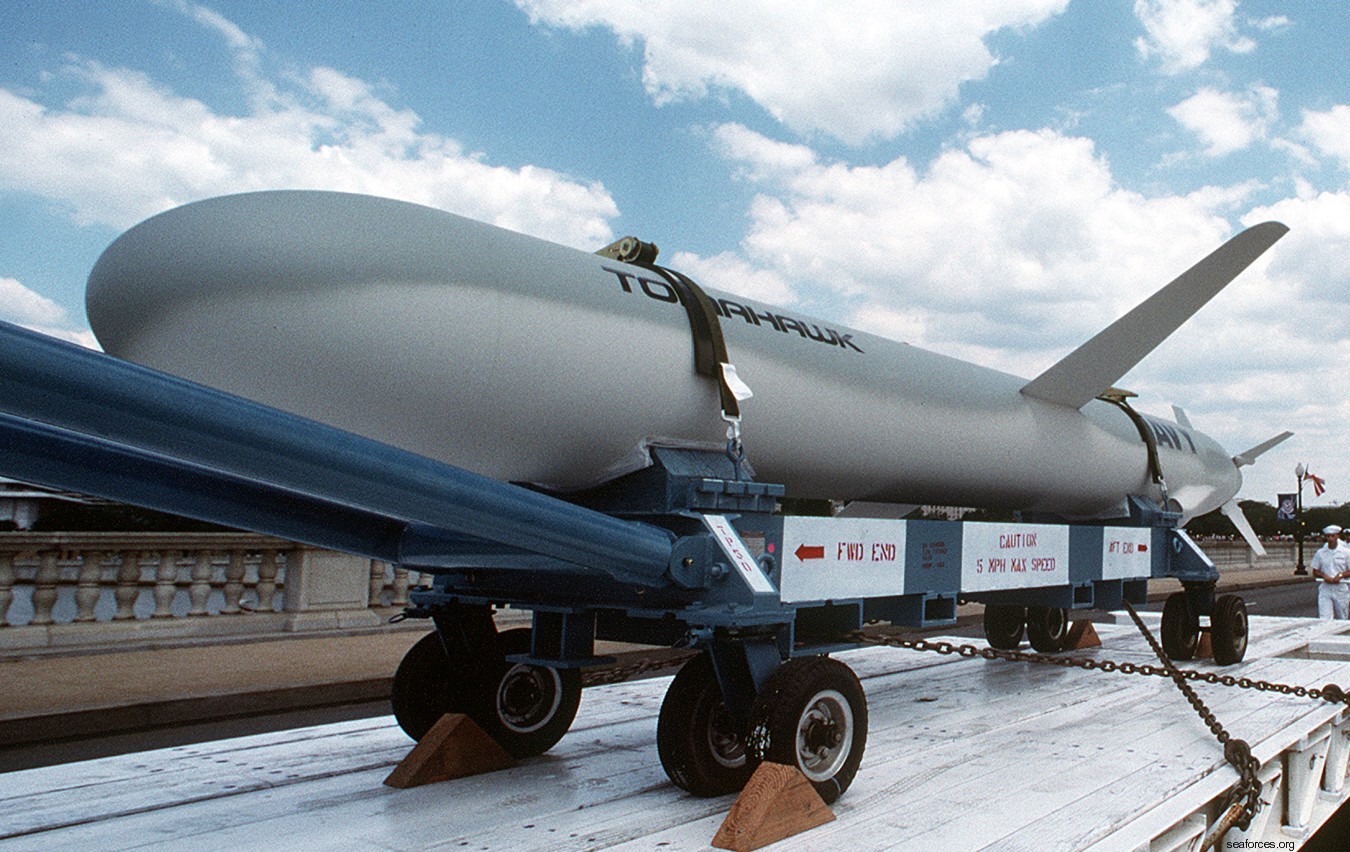 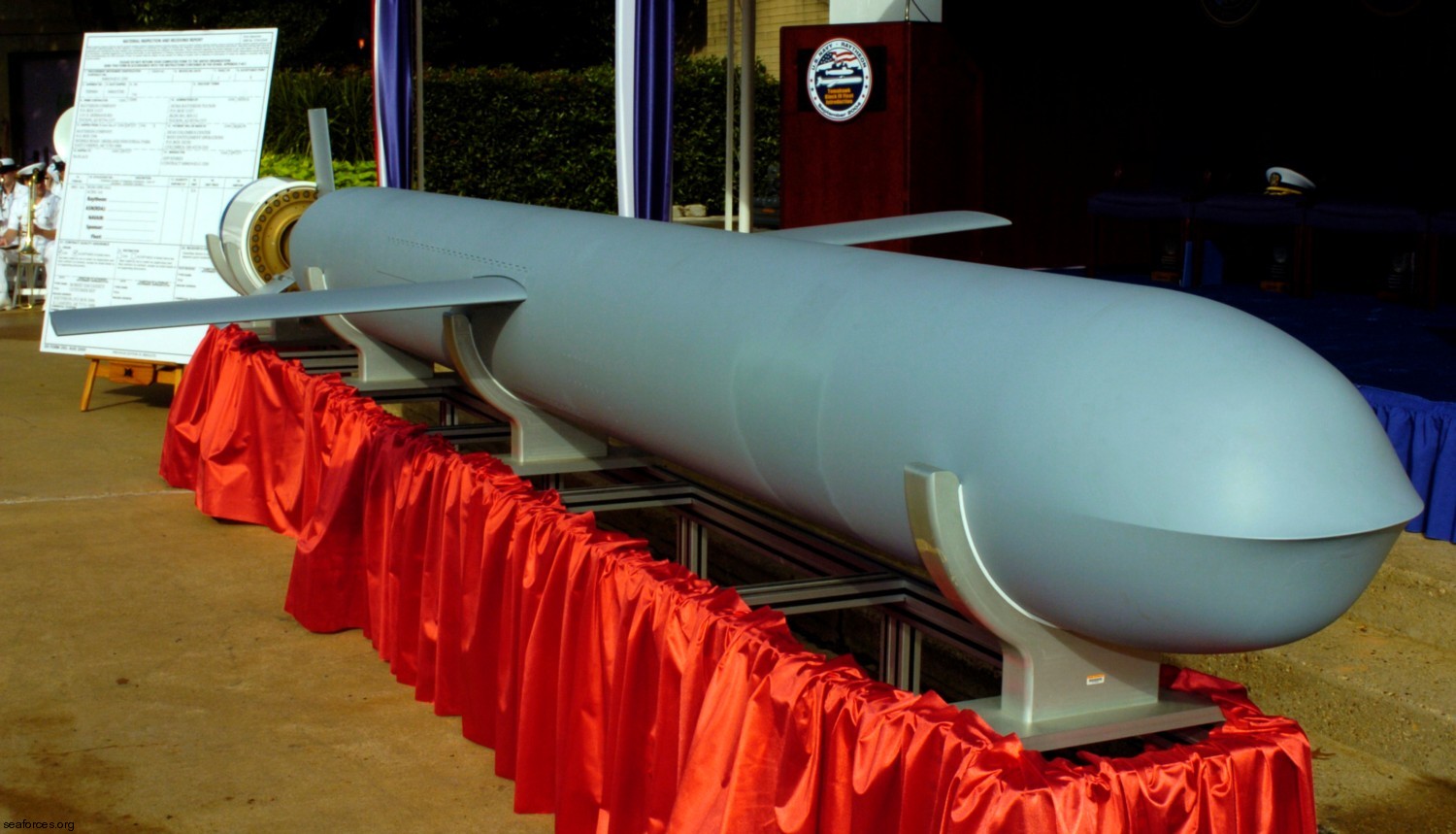 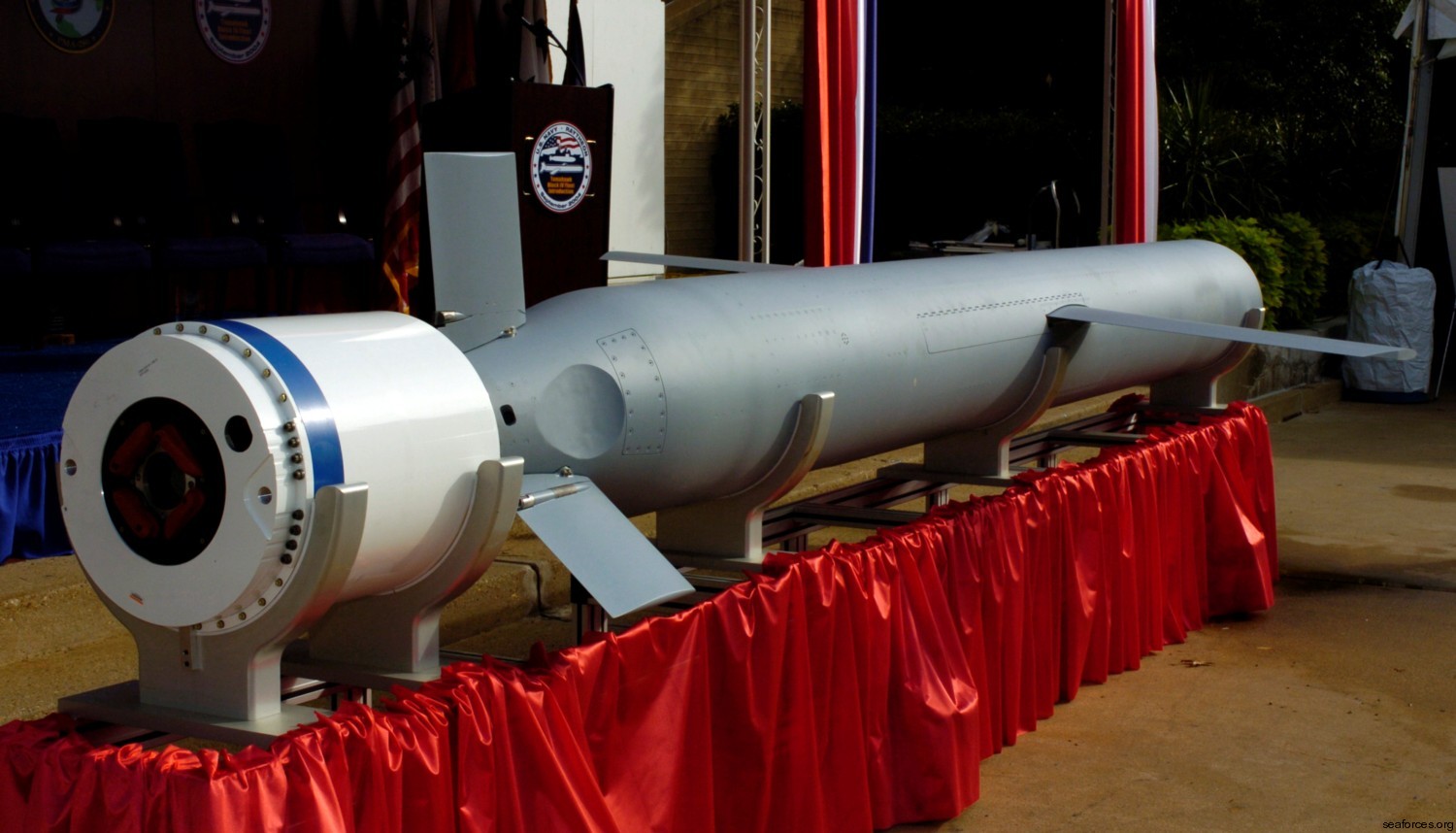 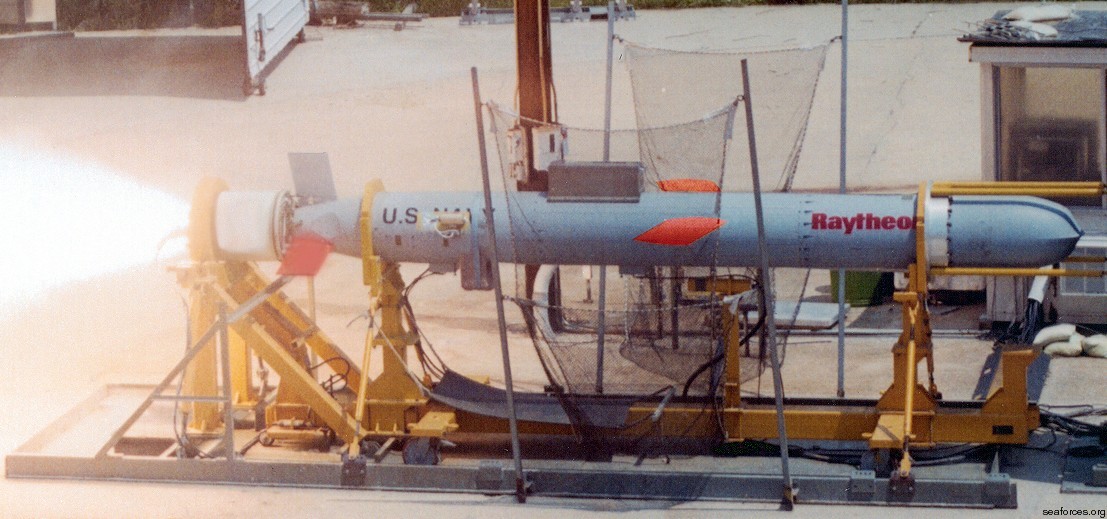 Tactical Tomahawk / Block IV - functional ground test - May 2002 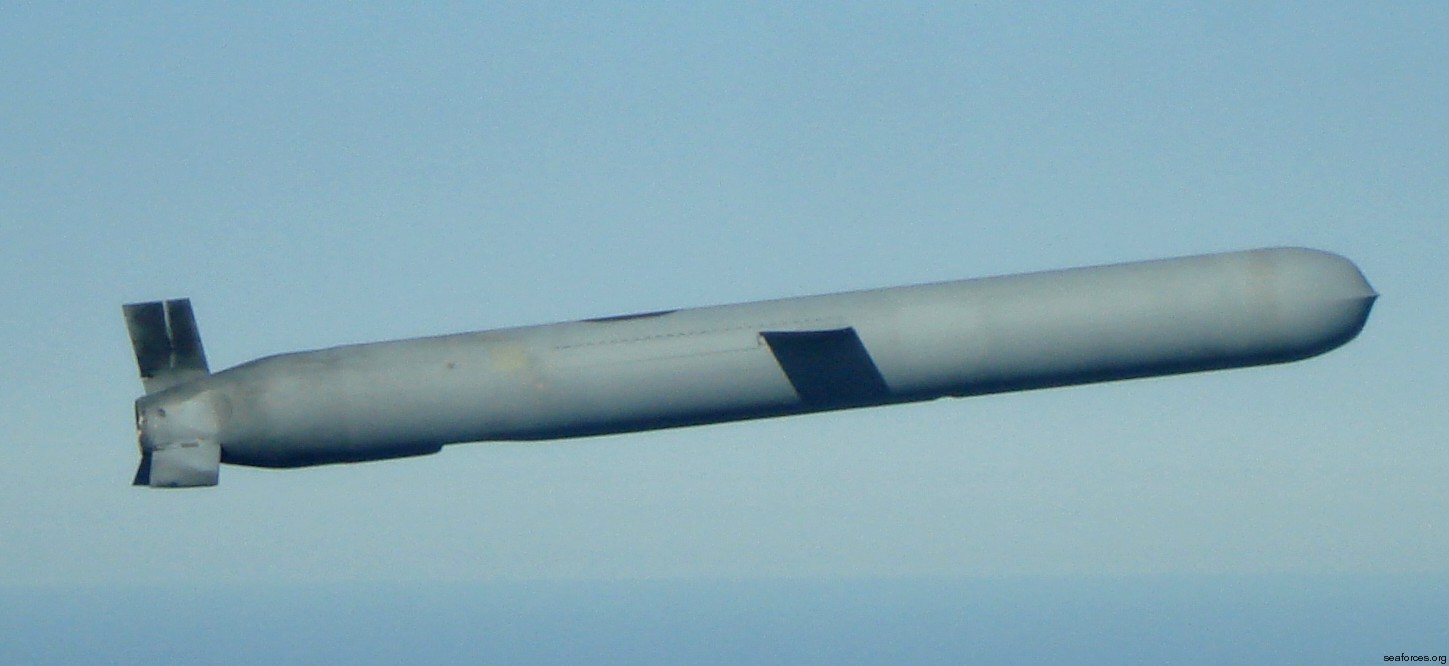 cruising 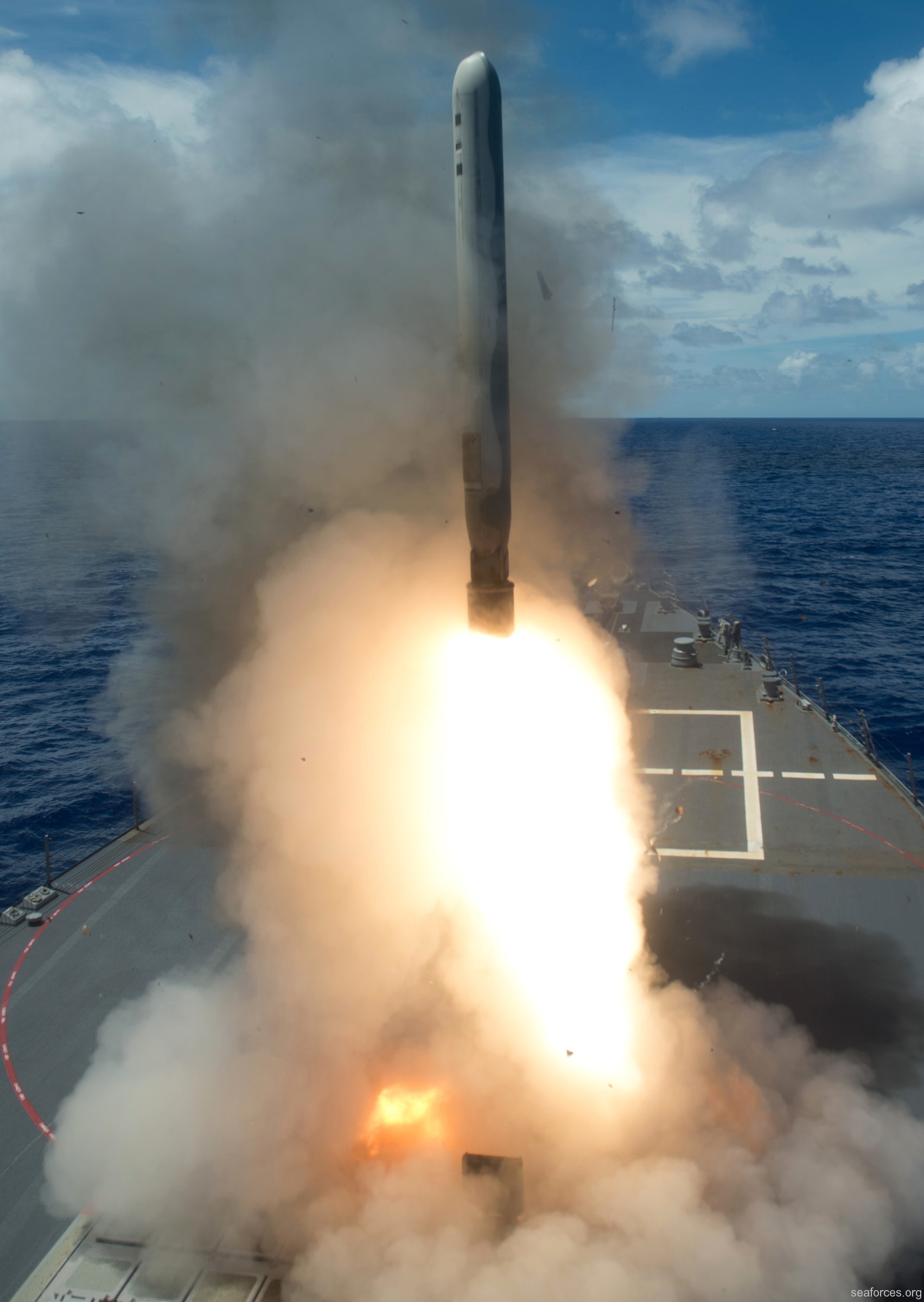 BGM-109 Tomahawk missile was launched from Mk-41 VLS aboard USS McCampbell (DDG 85) 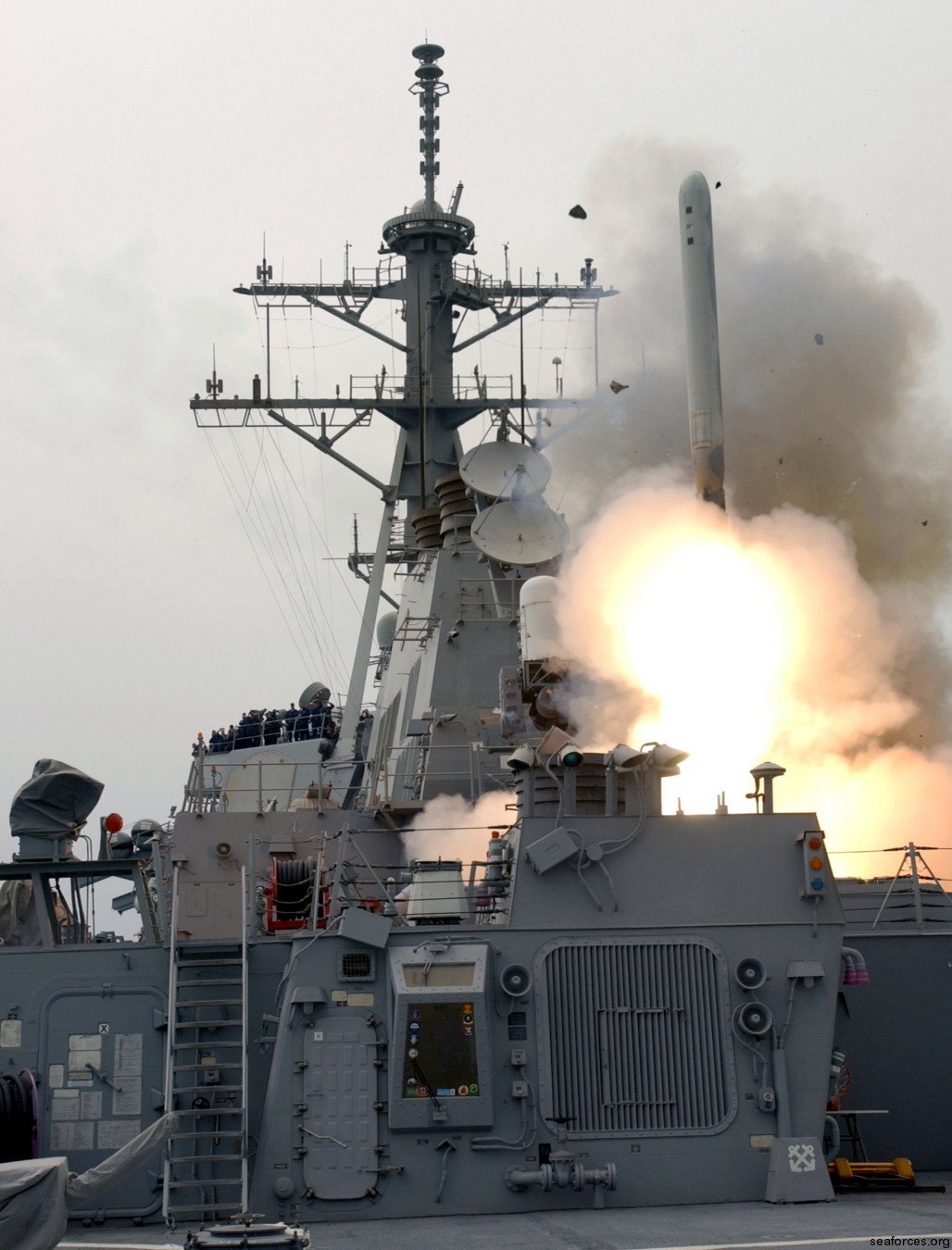 BGM-109 Tomahawk missile was launched from Mk-41 VLS aboard USS Milius (DDG 69) 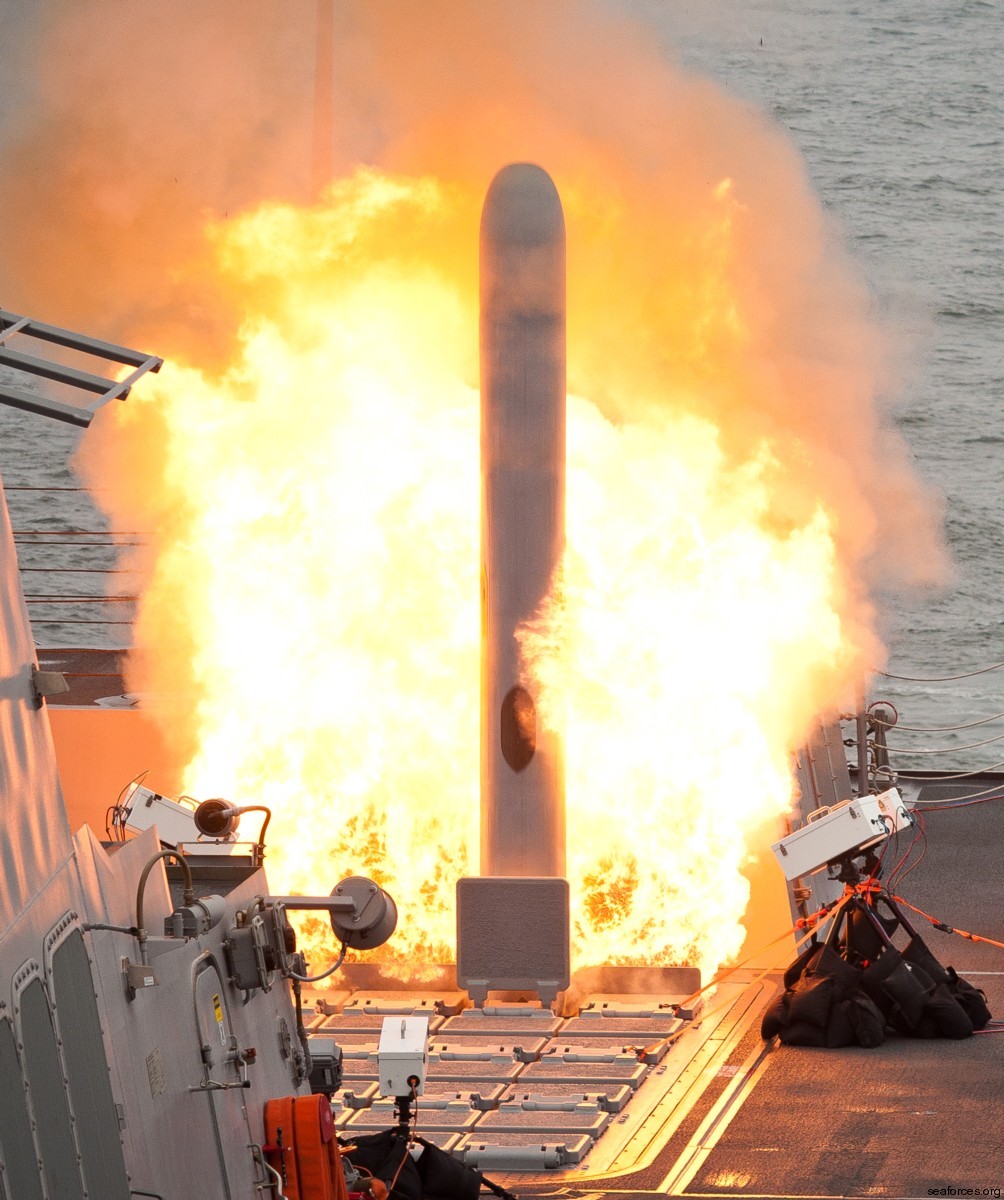 BGM-109 Tomahawk missile was launched from Mk-41 VLS aboard USS Sterett (DDG 104) 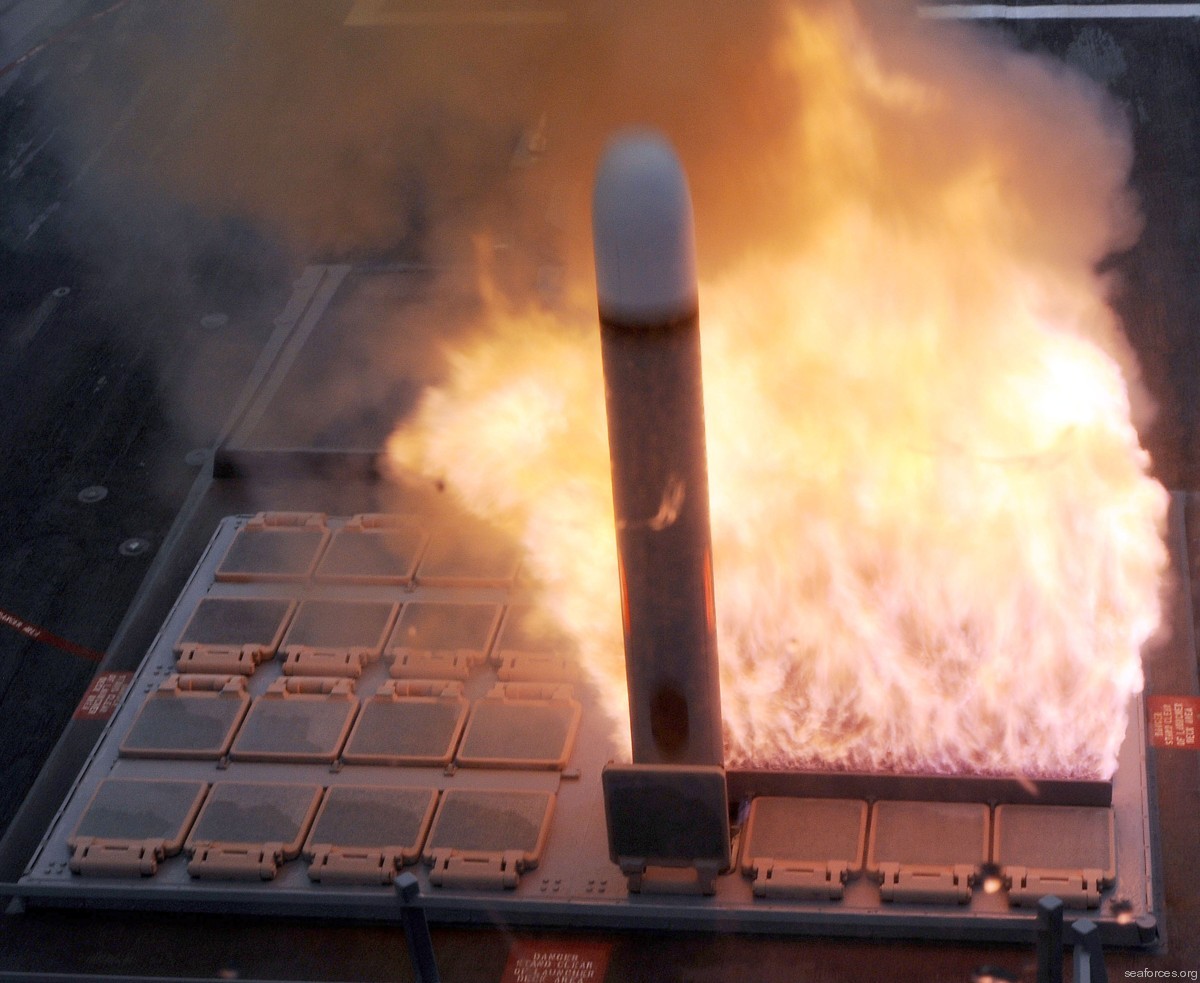 BGM-109 Tomahawk missile was launched from Mk-41 VLS aboard USS Farragut (DDG 99) 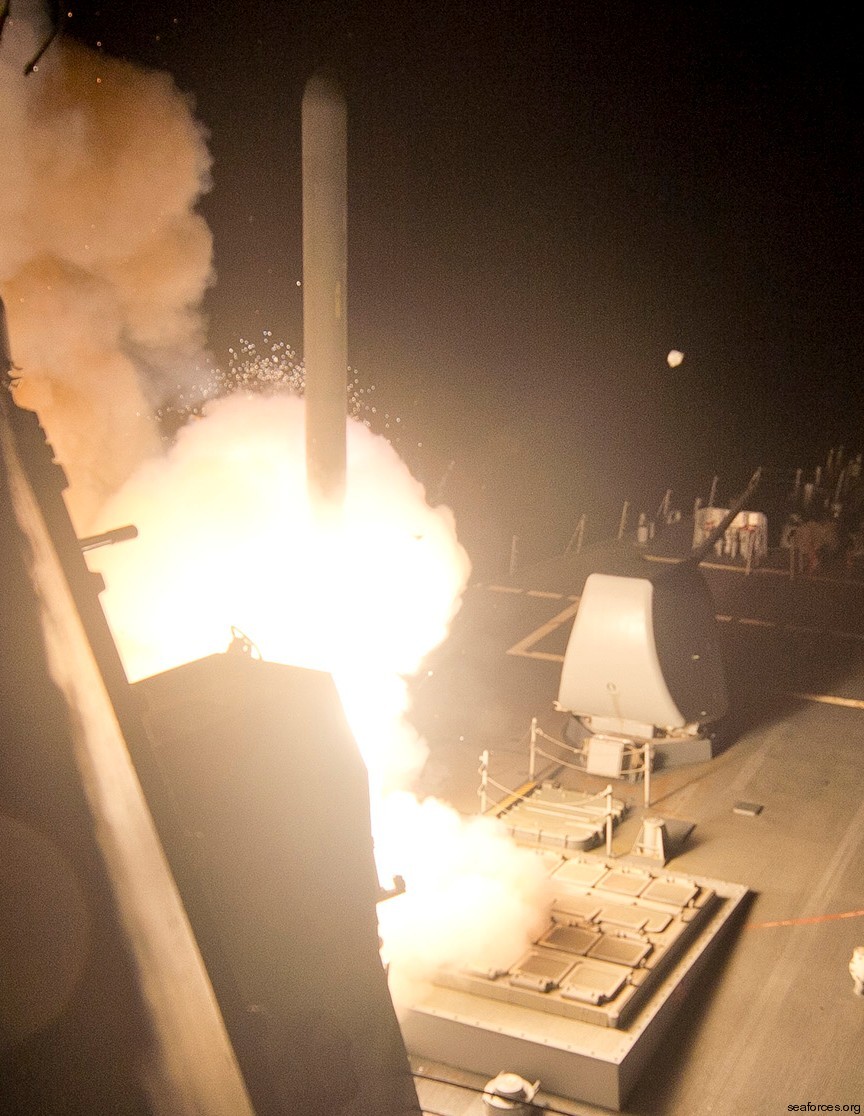 BGM-109 Tomahawk missile was launched against ISIL forces from Mk-41 VLS aboard USS Arleigh Burke (DDG 51) - September 2014 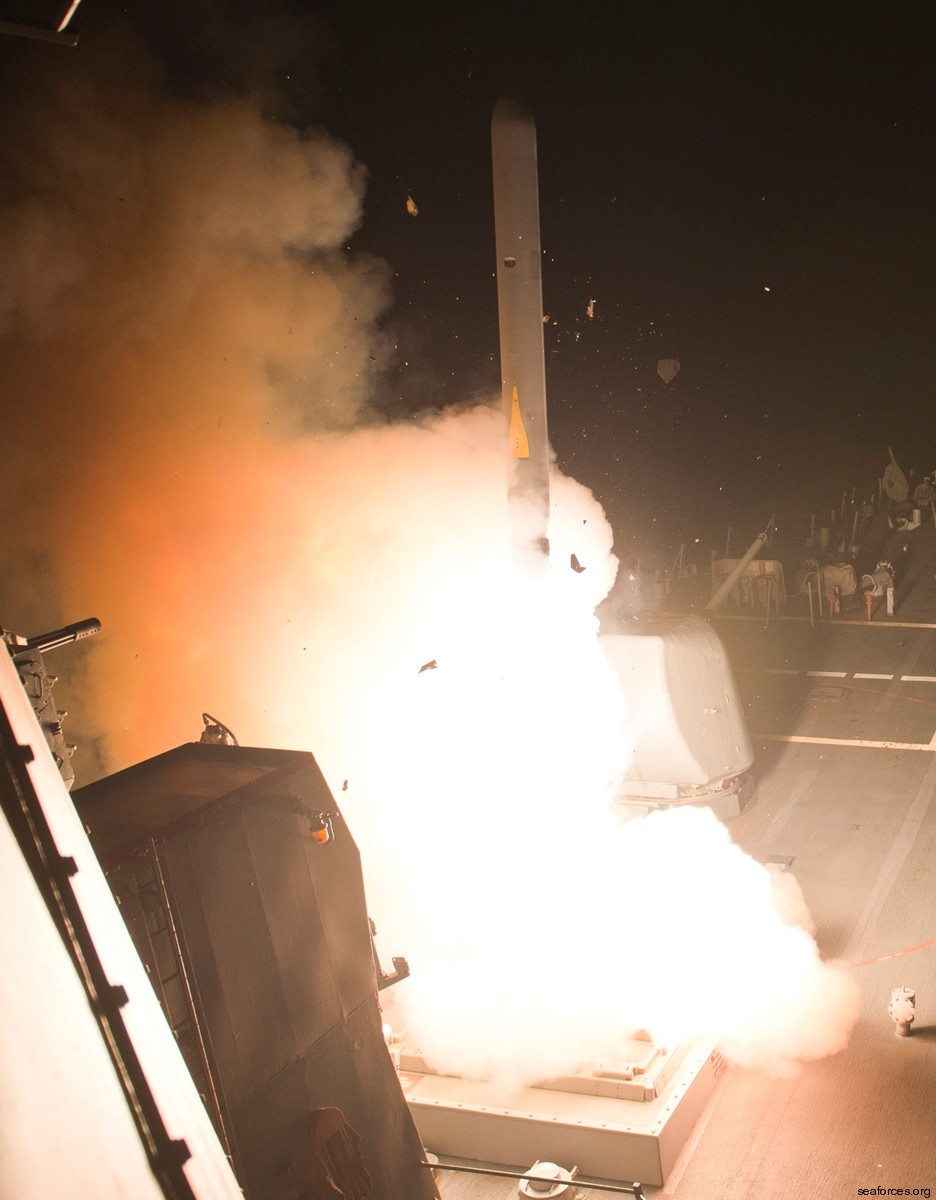 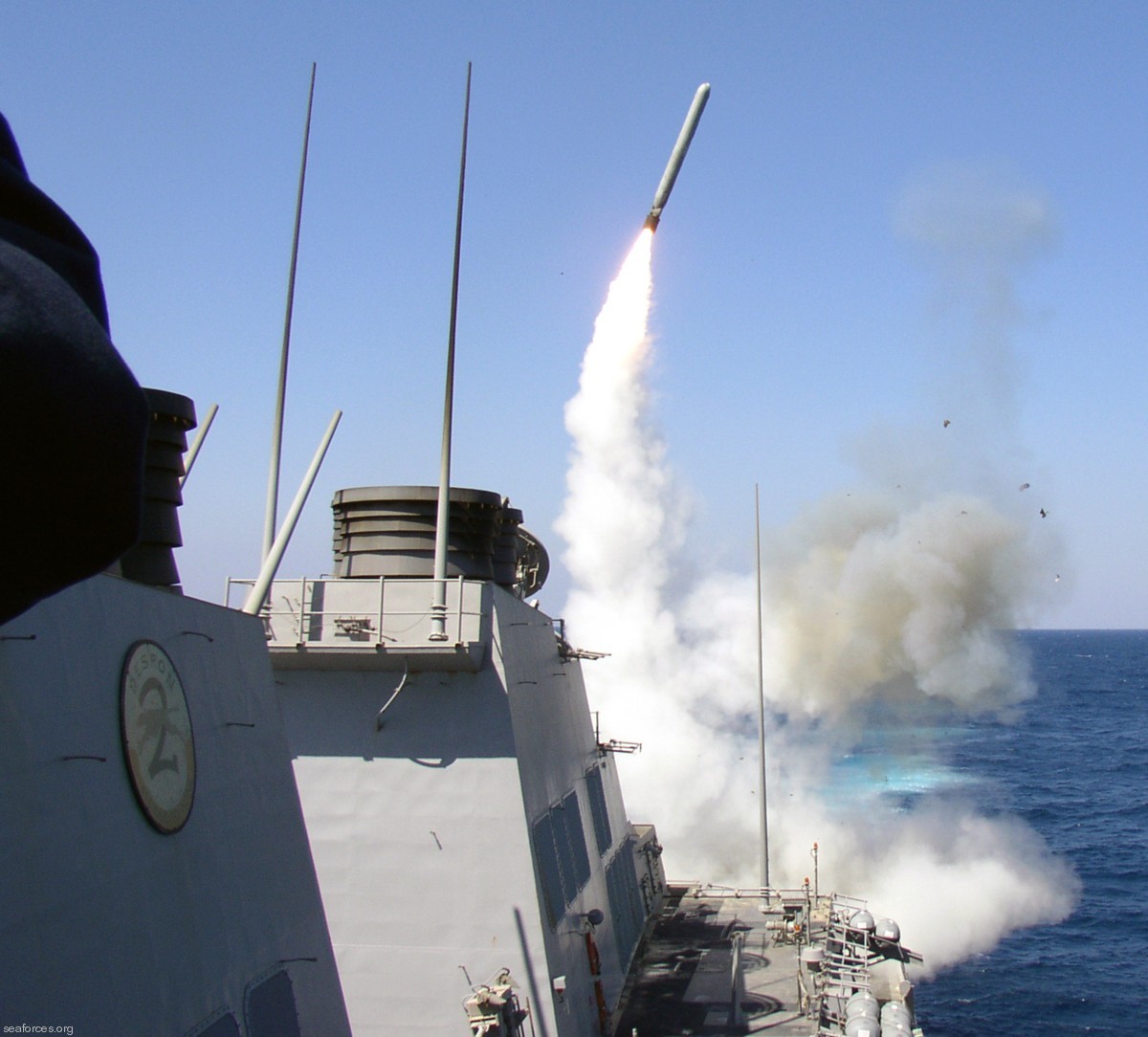 BGM-109 Tomahawk missile was launched from Mk-41 VLS aboard USS Porter (DDG 78) 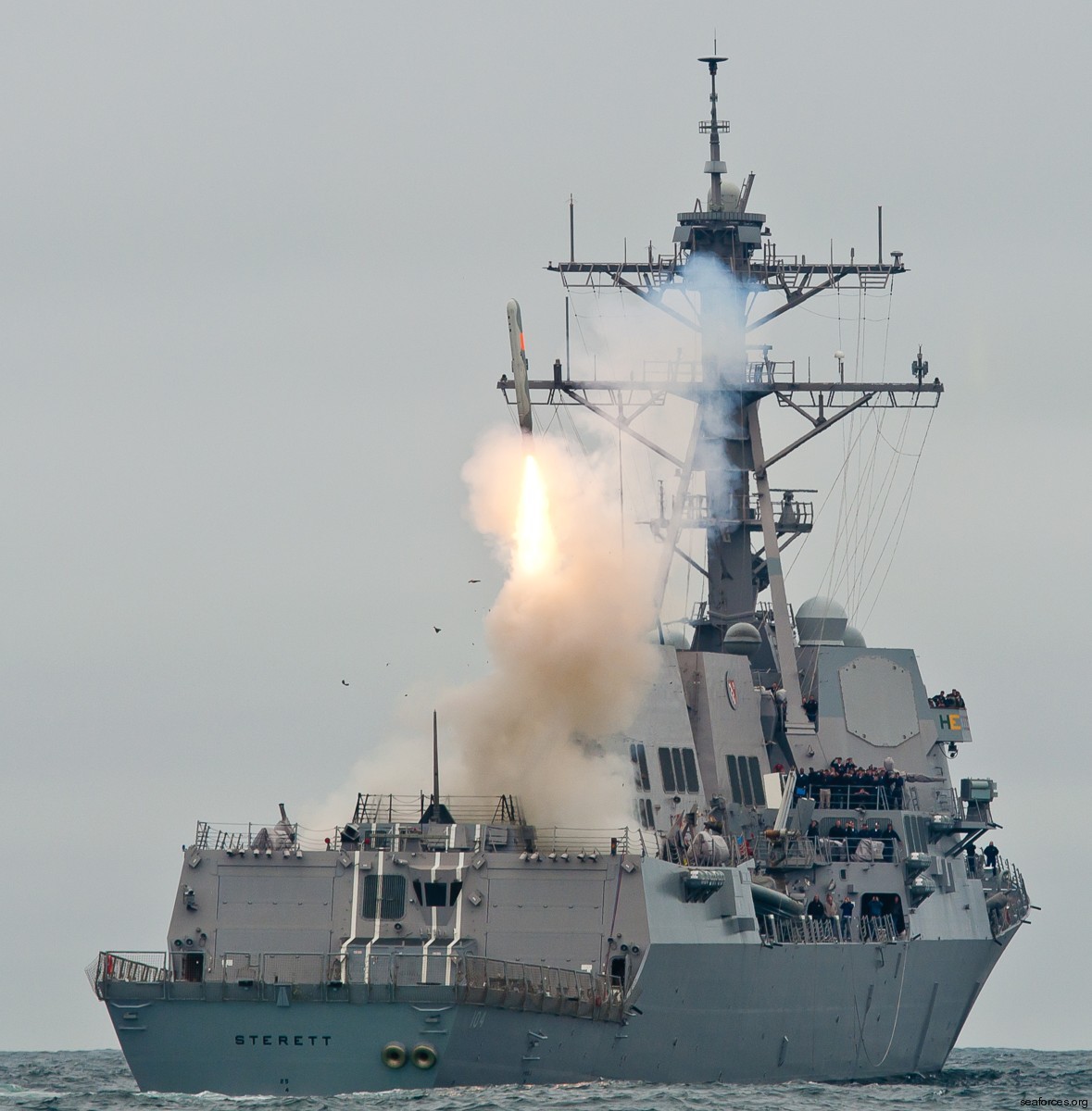 BGM-109 Tomahawk missile was launched from Mk-41 VLS aboard USS Sterett (DDG 104) 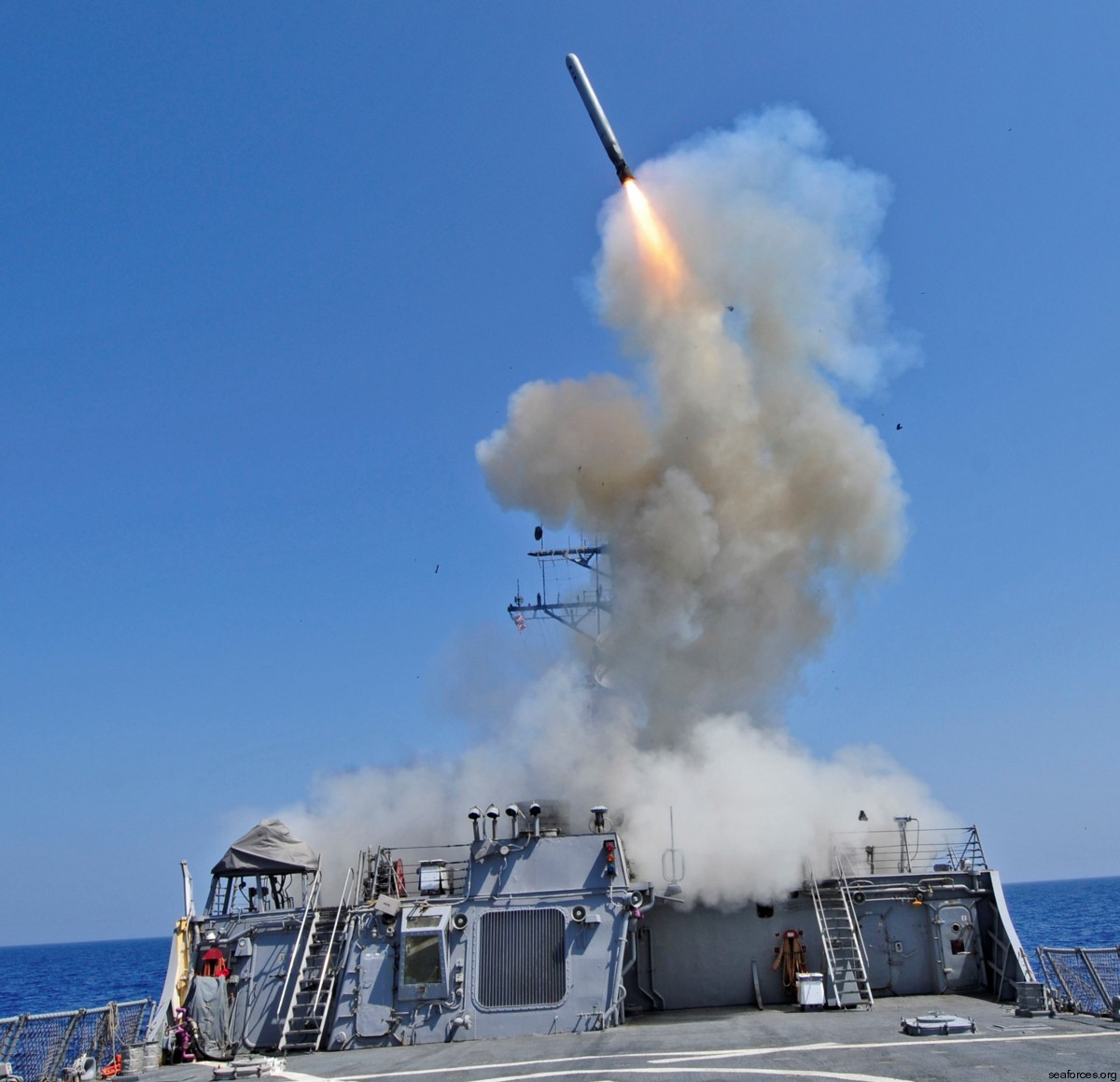 BGM-109 Tomahawk missile was launched from Mk-41 VLS aboard USS Barry (DDG 52) 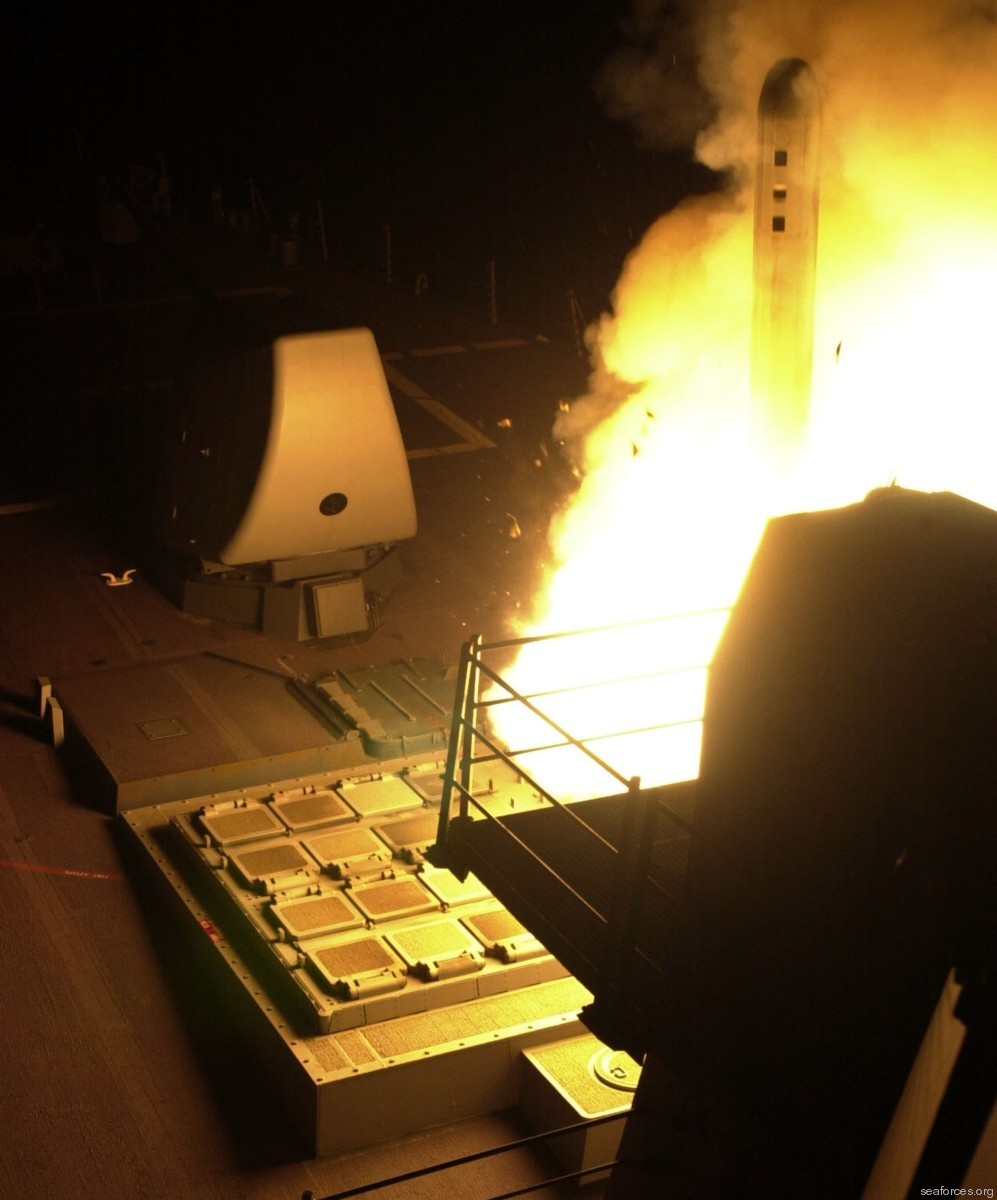 BGM-109 Tomahawk missile was launched from Mk-41 VLS aboard USS John Paul Jones (DDG 53) 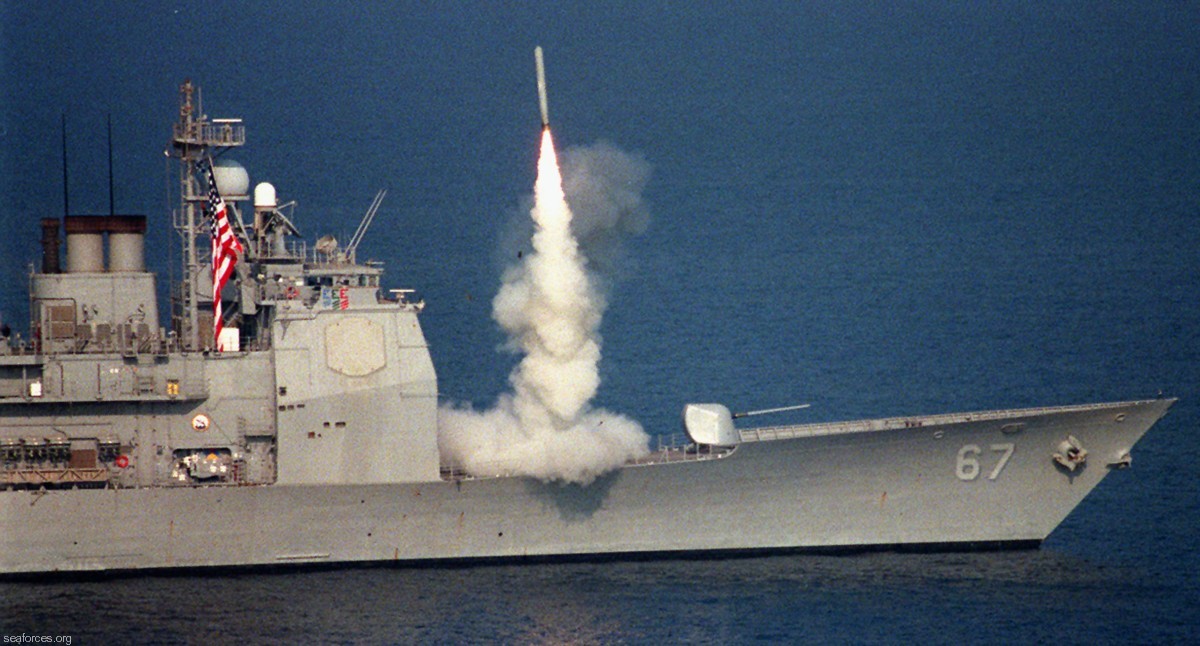 BGM-109 Tomahawk missile was launched from Mk-41 VLS aboard USS Shiloh (CG 67) 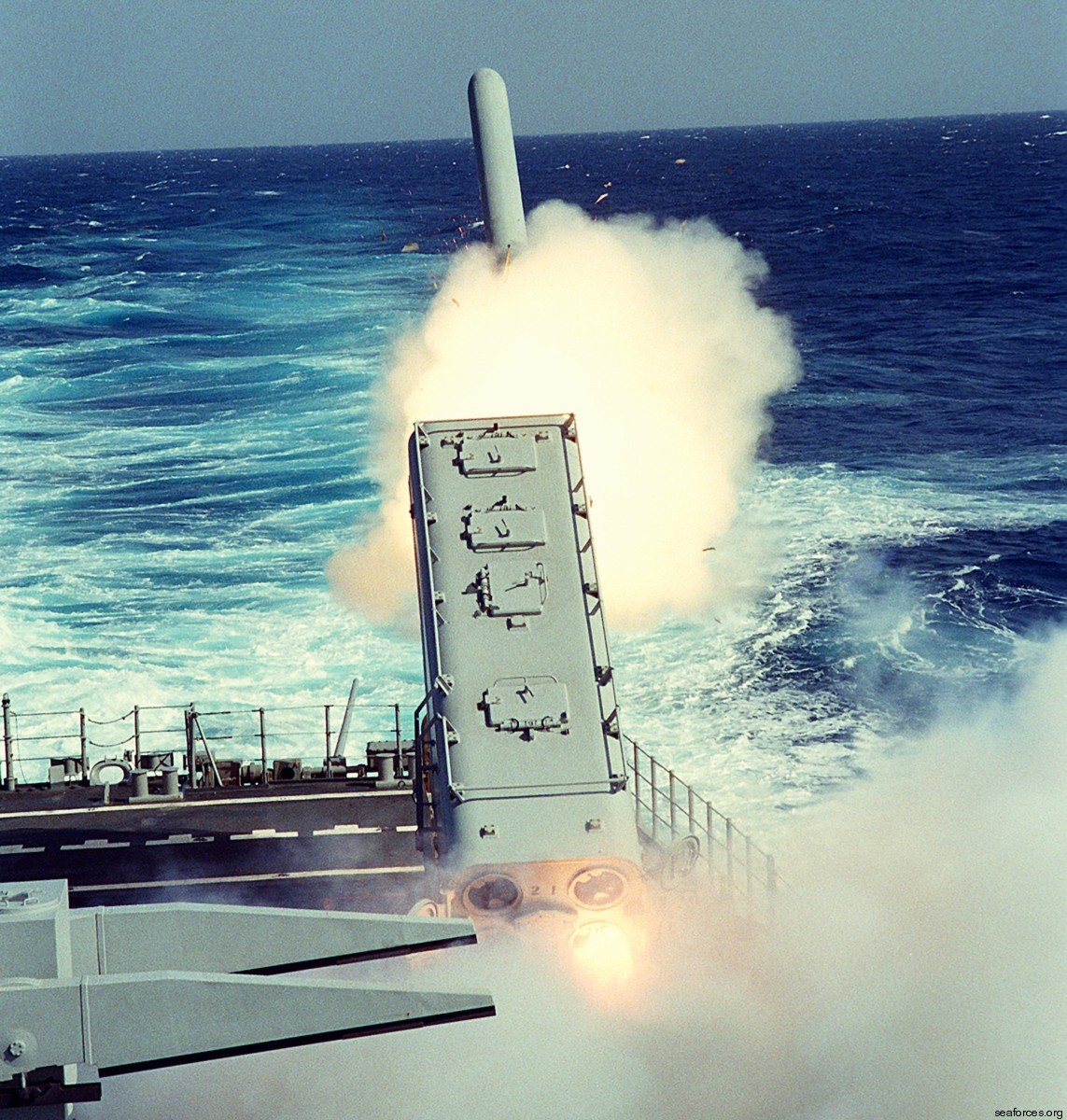 BGM-109 Tomahawk TLAM was launched from a Mk-143 armored box launcher aboard USS Mississippi (CGN 40) 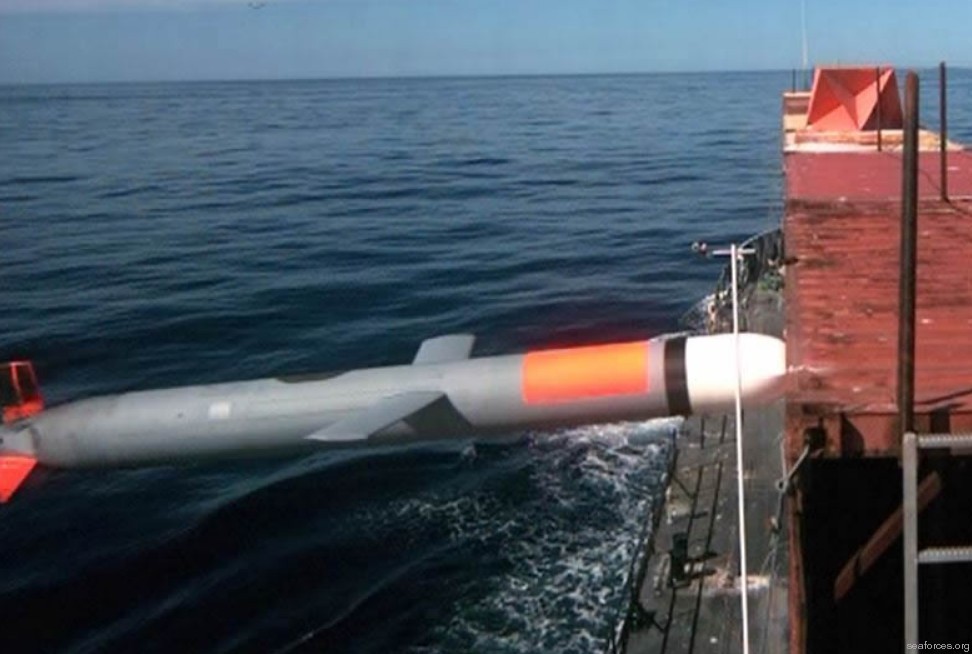 before impact 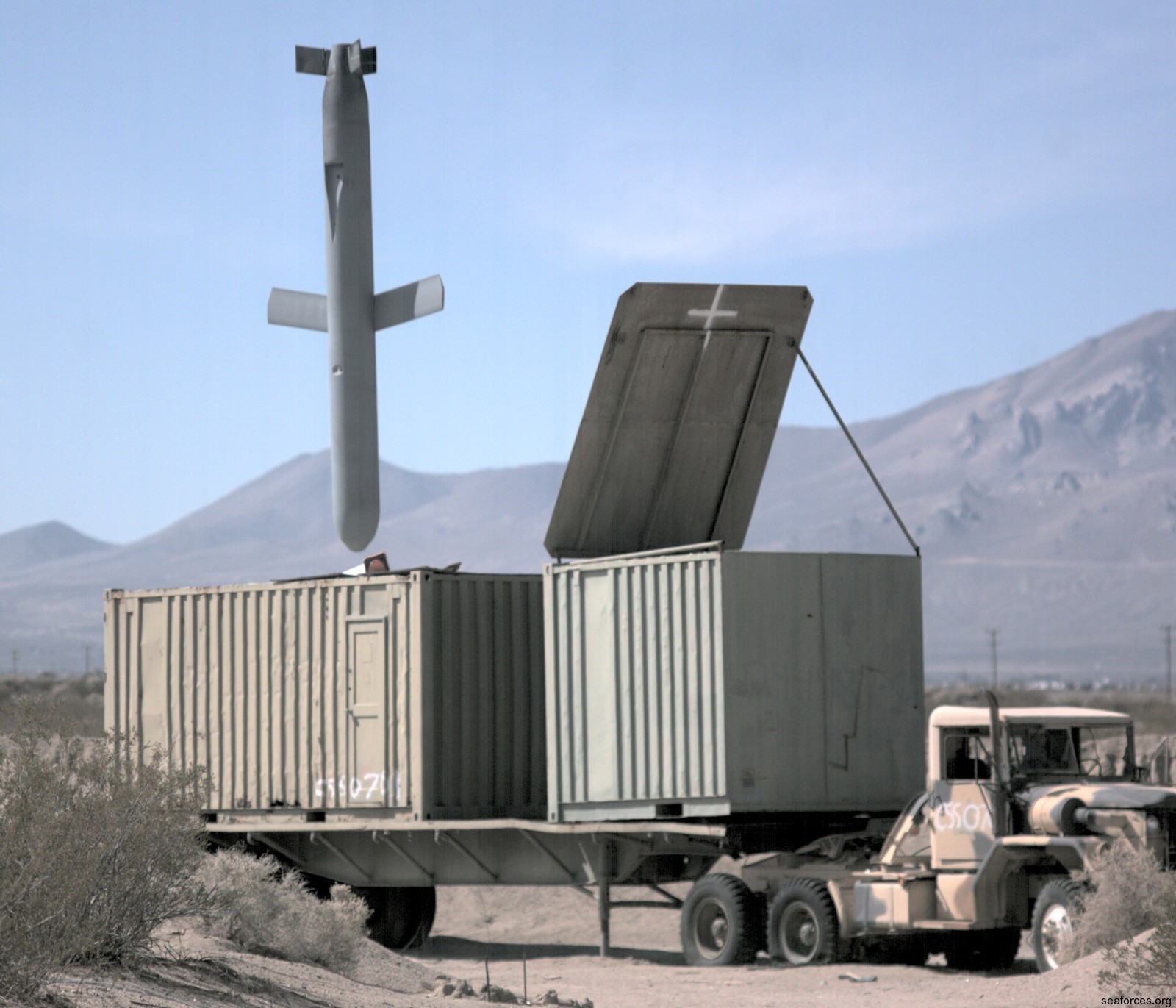 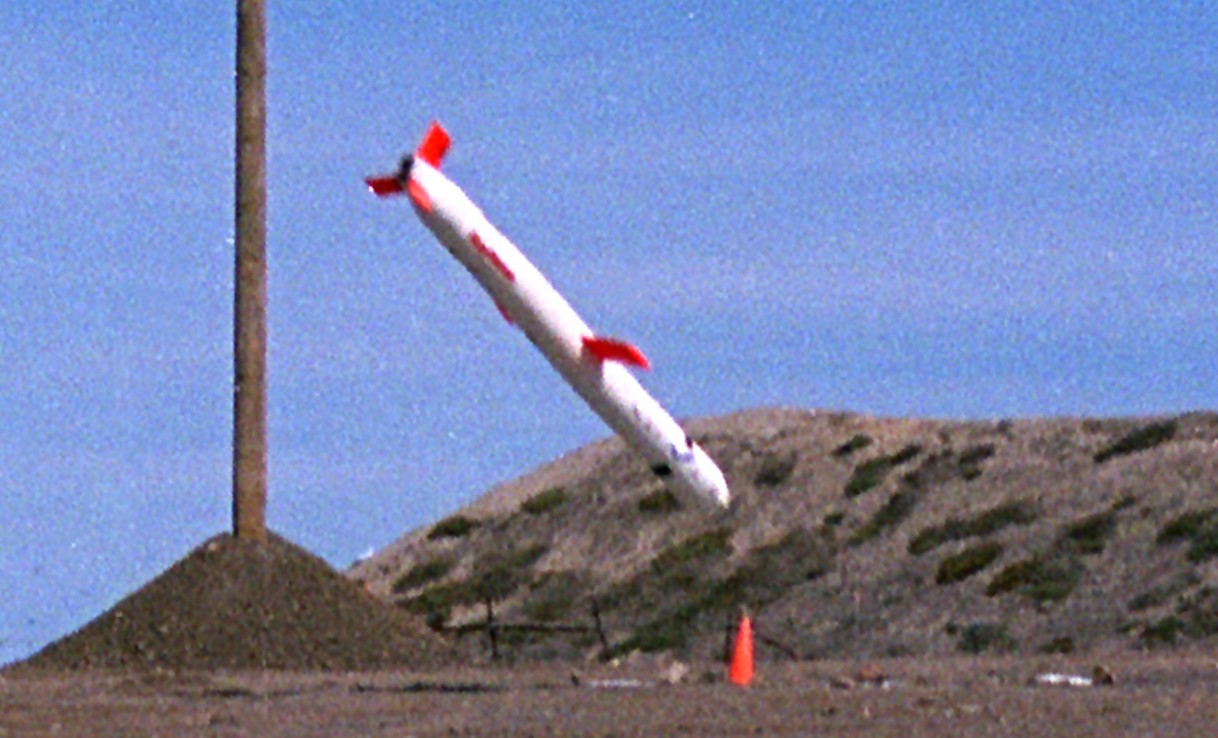 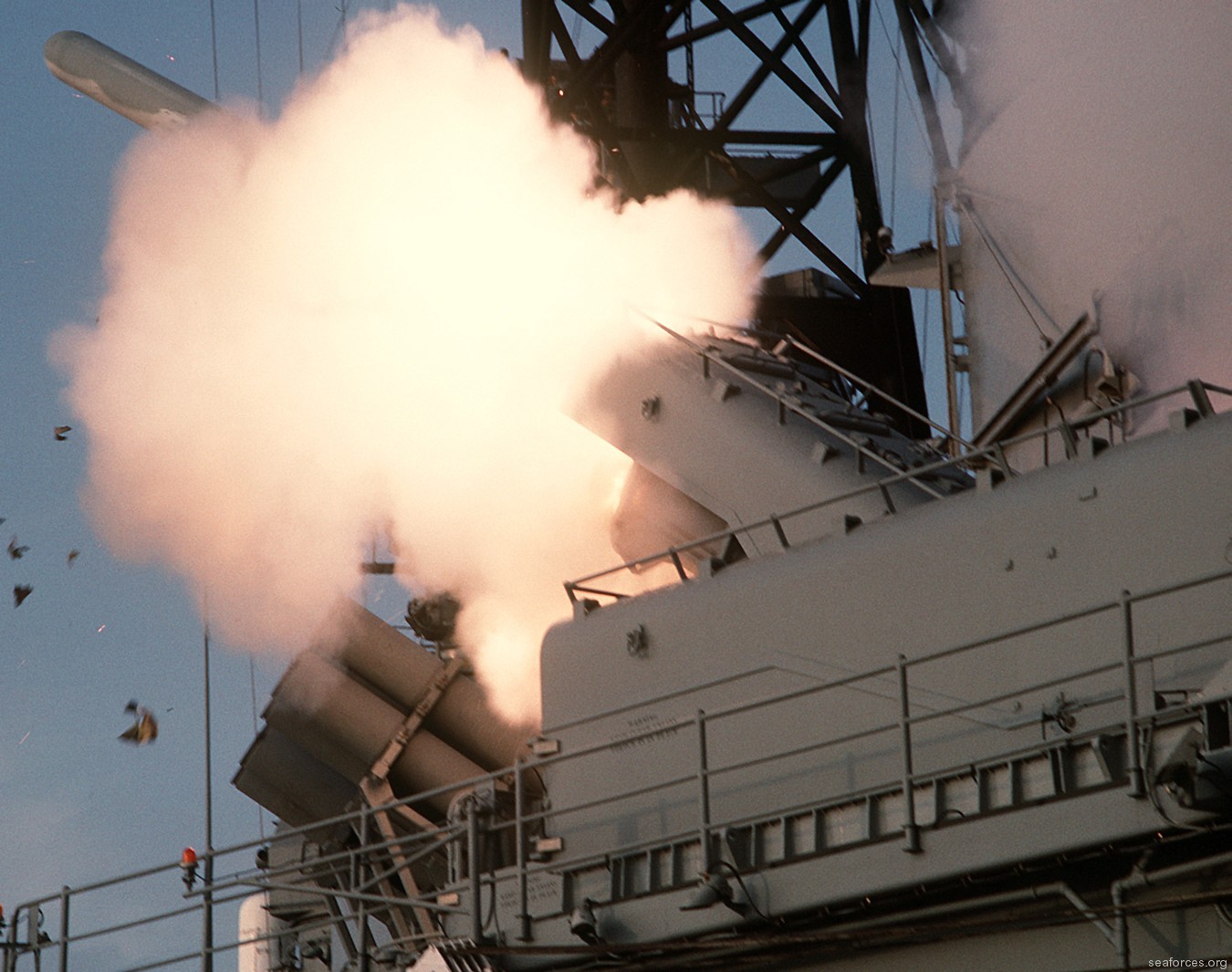 BGM-109 Tomahawk TLAM was launched from a Mk-143 armored box launcher 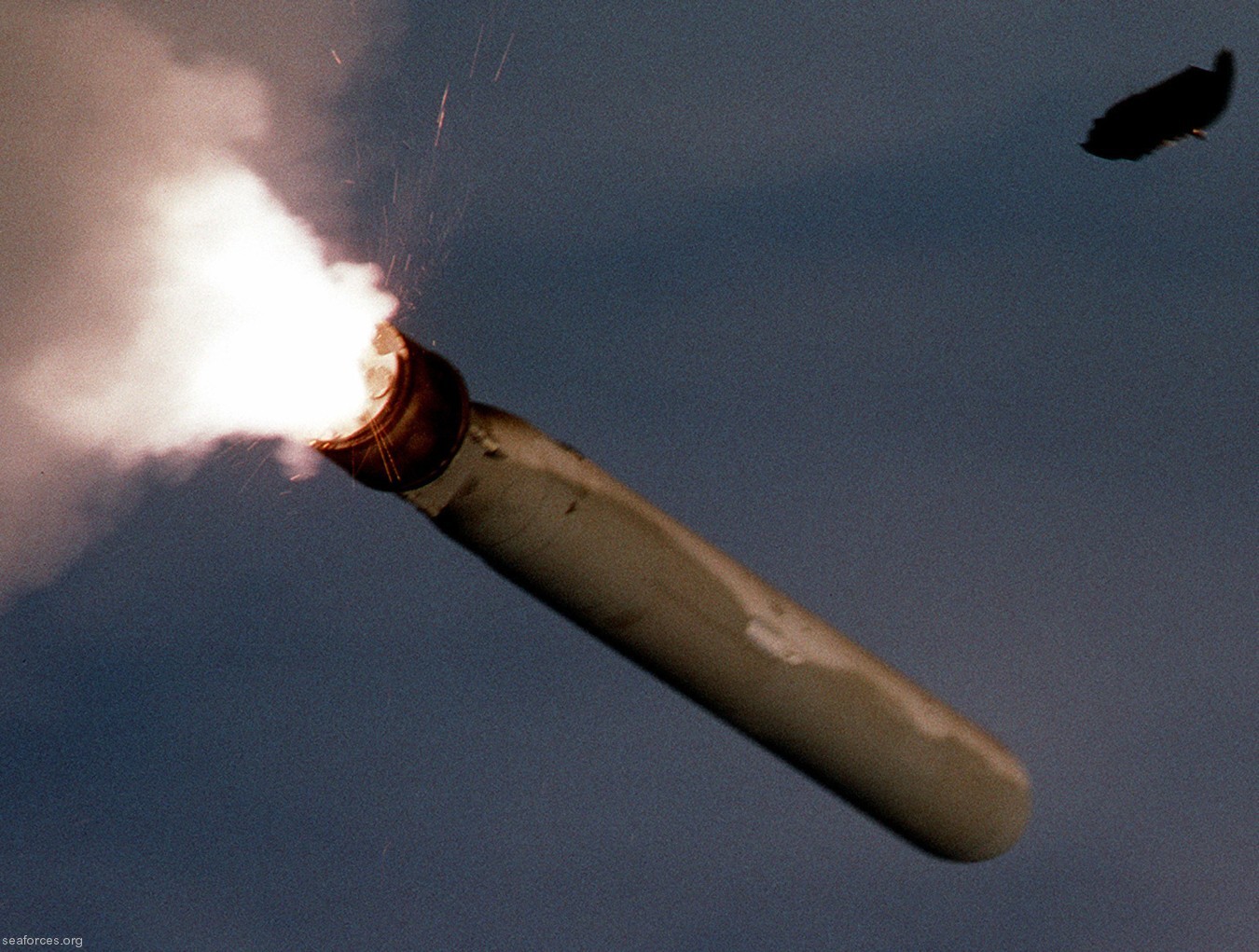 BGM-109 Tomahawk TLAM was launched from a Mk-143 armored box launcher aboard USS Wisconsin (BB 64) 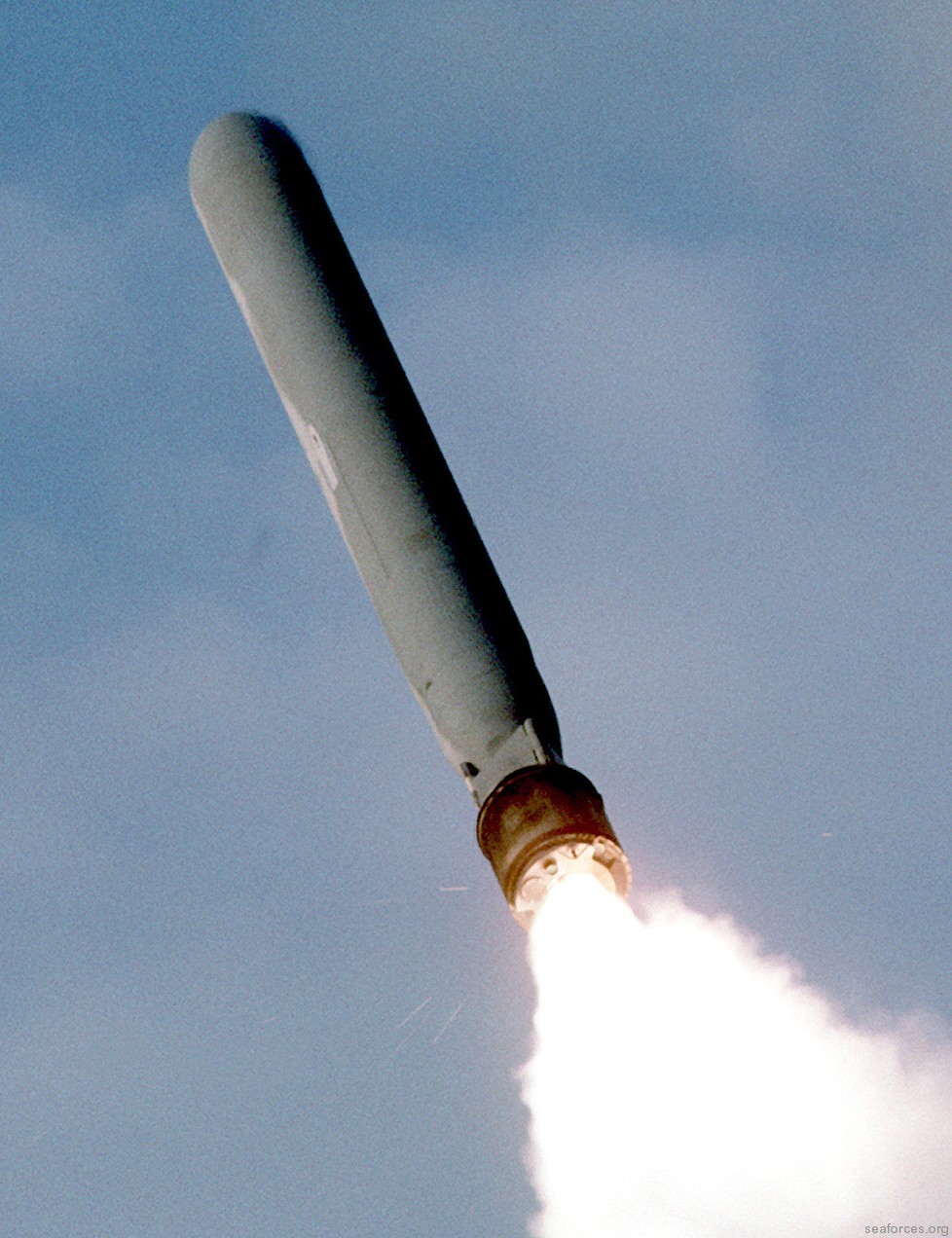 BGM-109 Tomahawk TLAM was launched from a Mk-143 armored box launcher aboard USS Wisconsin (BB 64) 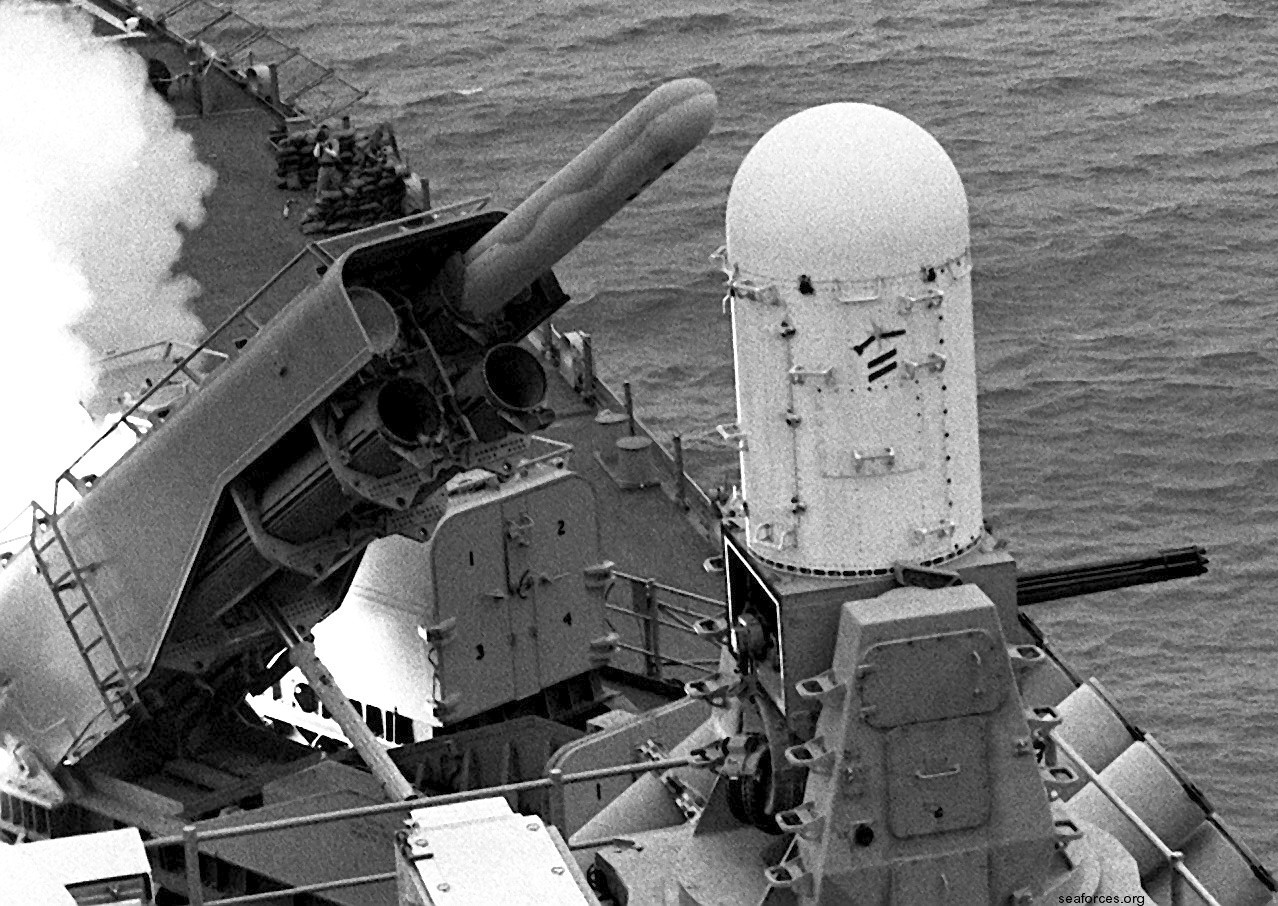 BGM-109 Tomahawk TLAM was launched from a Mk-143 armored box launcher aboard USS Missouri (BB 63) 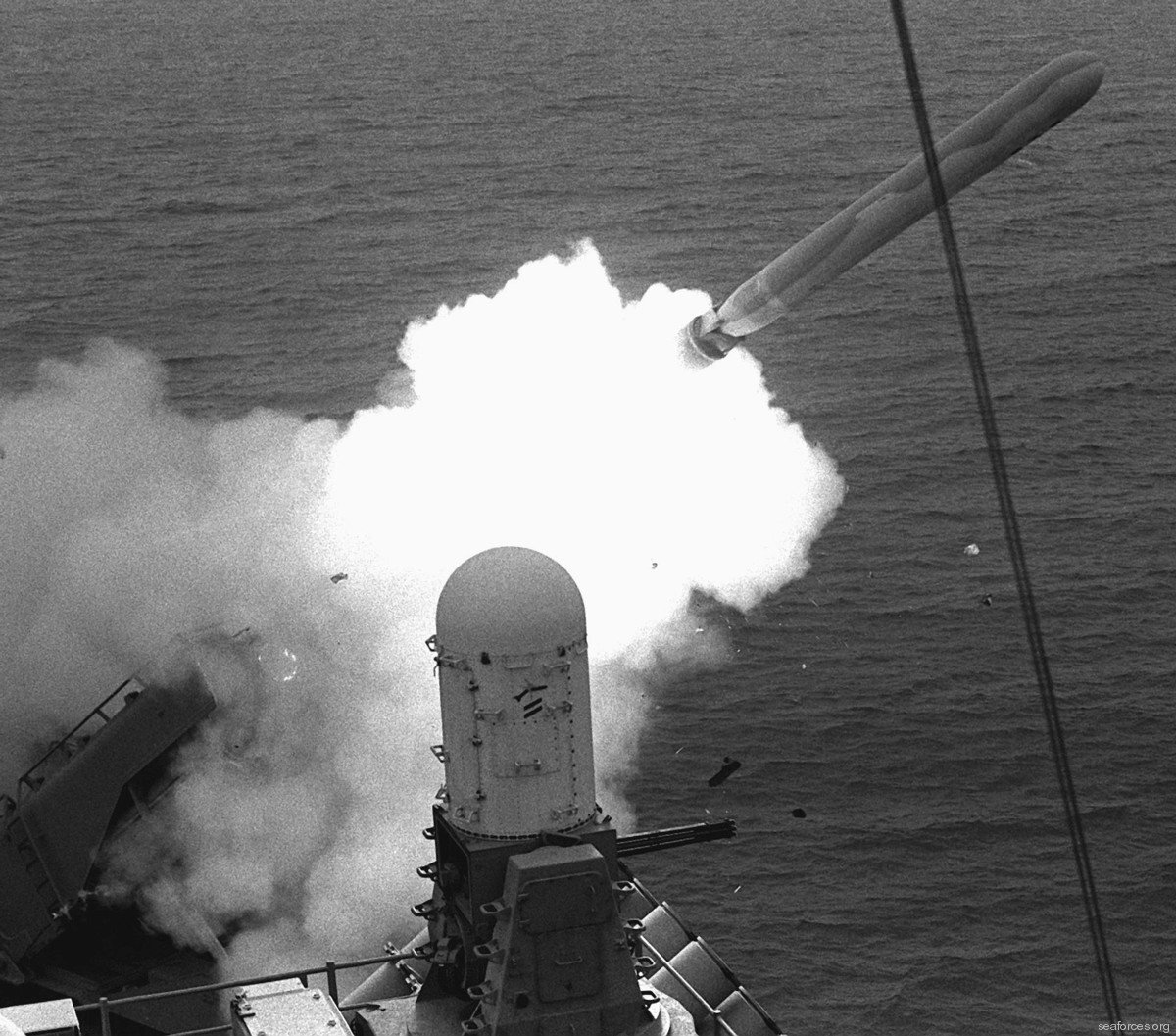 BGM-109 Tomahawk TLAM was launched from a Mk-143 armored box launcher aboard USS Missouri (BB 63) 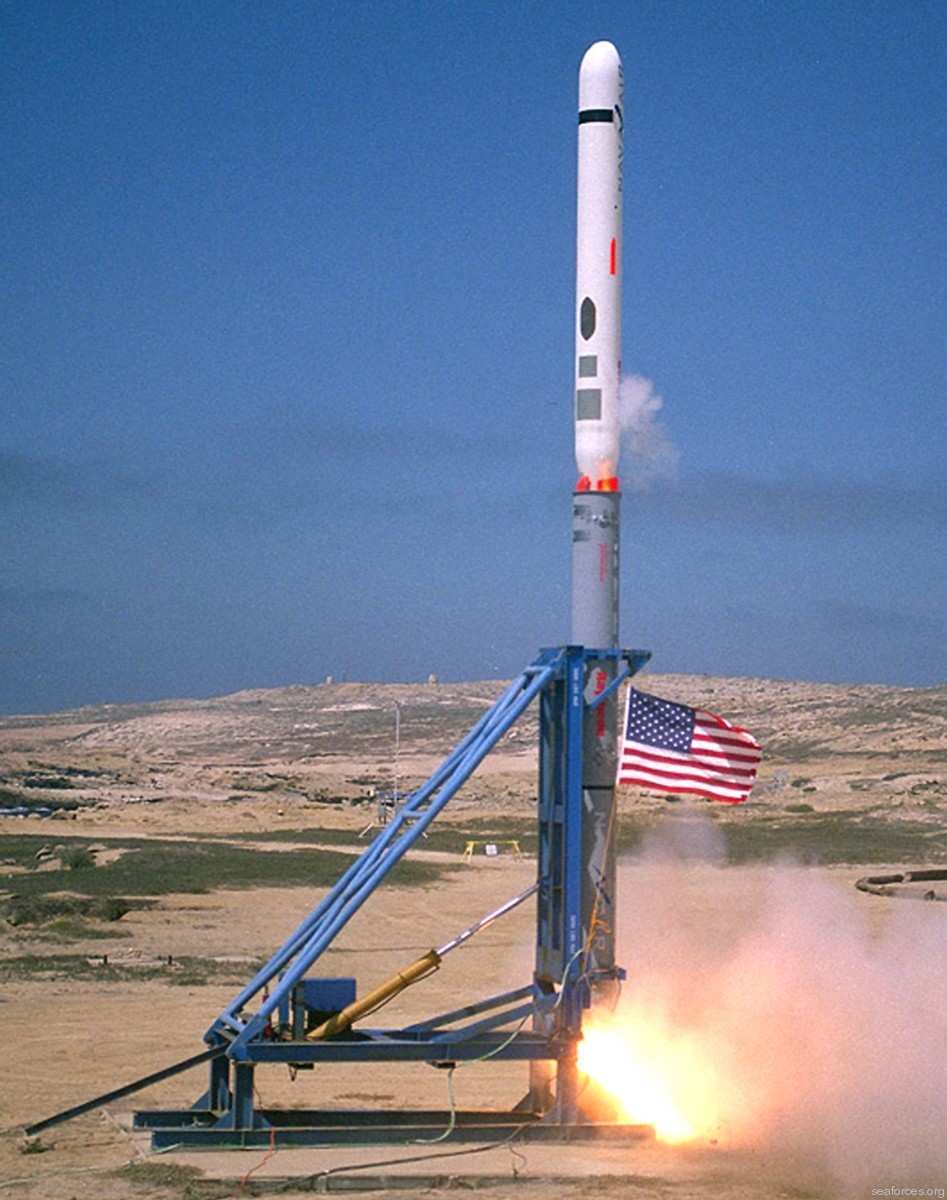 Tactical Tomahawk Block IV test launch - Point Mugu, California - August 2002 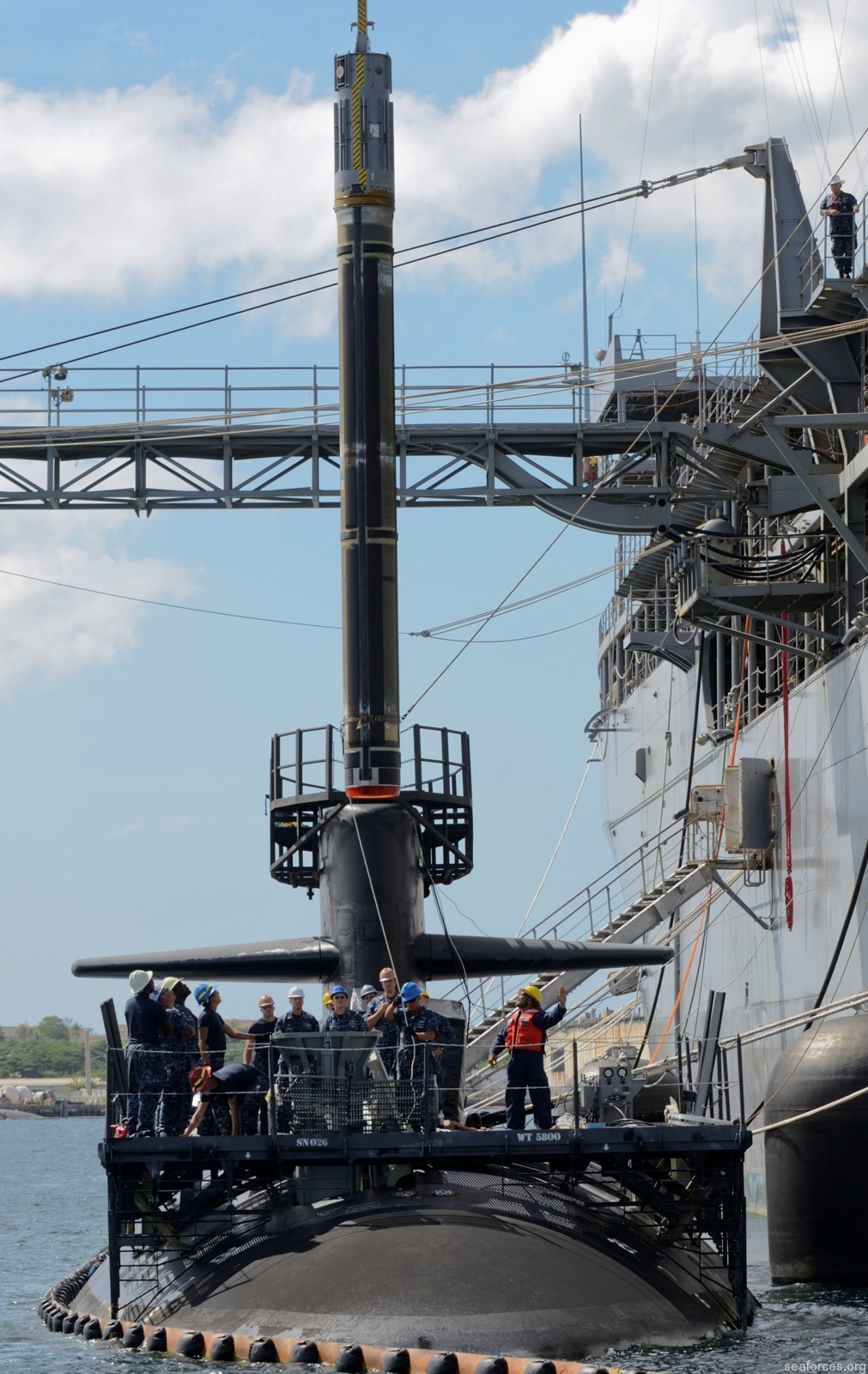 UGM-109 Tomahawk cruise missile was loaded into the Mk-45 VLS aboard a Los Angeles class Attack Submarine 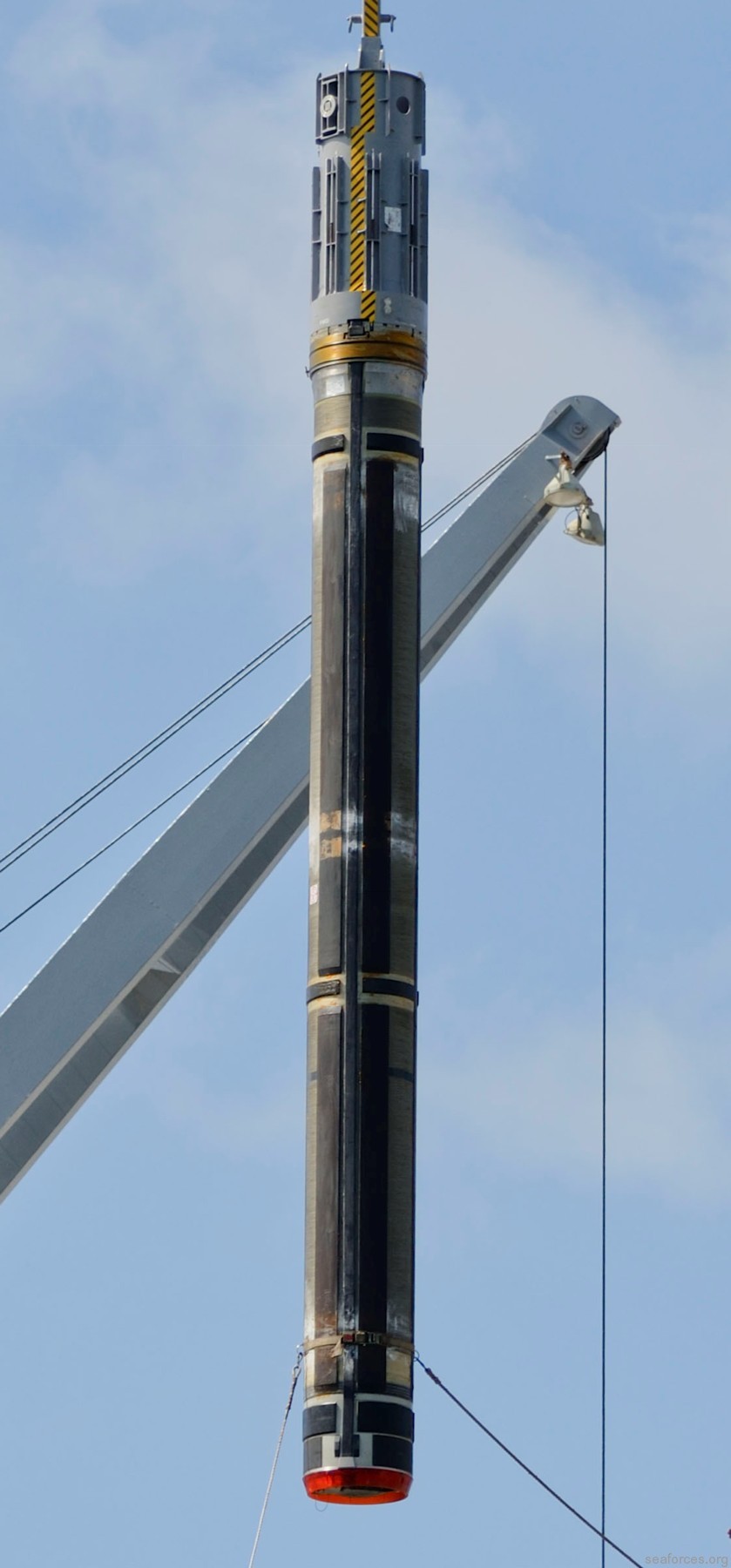 UGM-109 Tomahawk canister 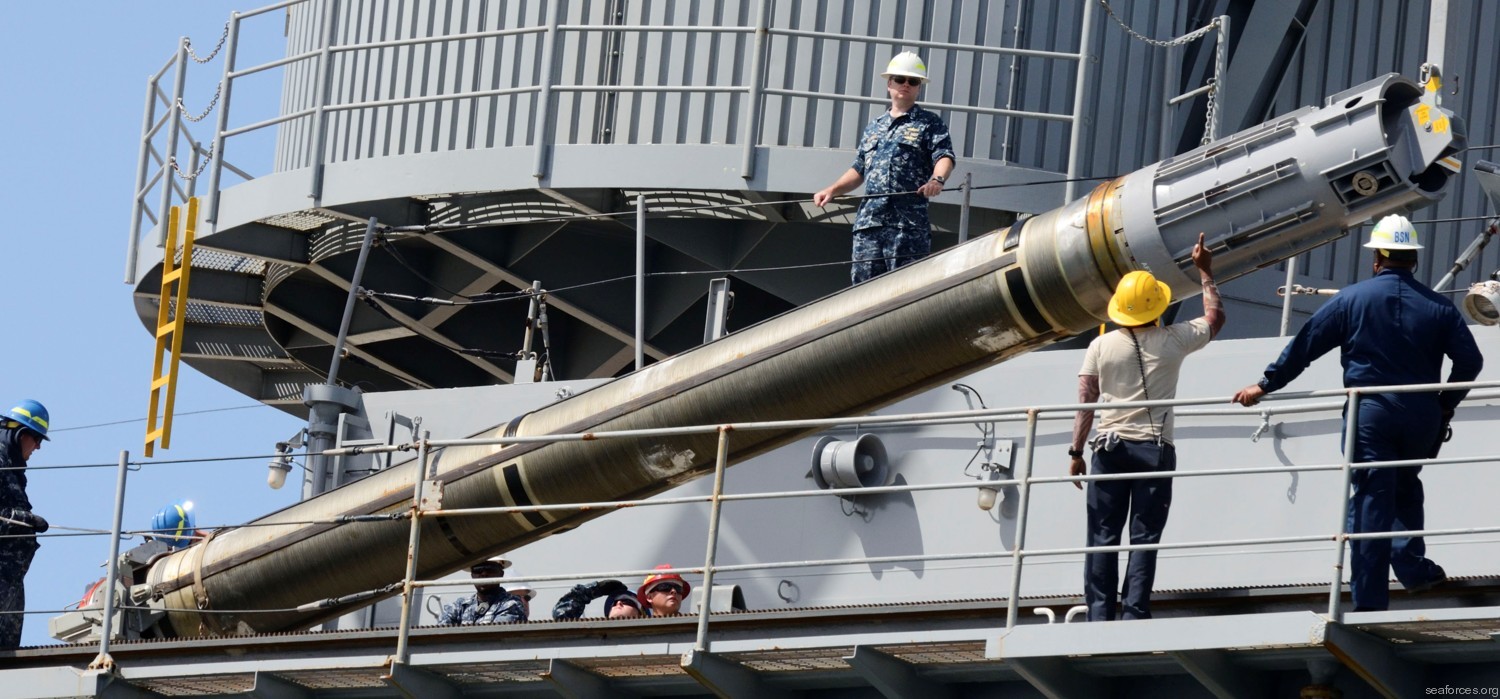 UGM-109 Tomahawk canister 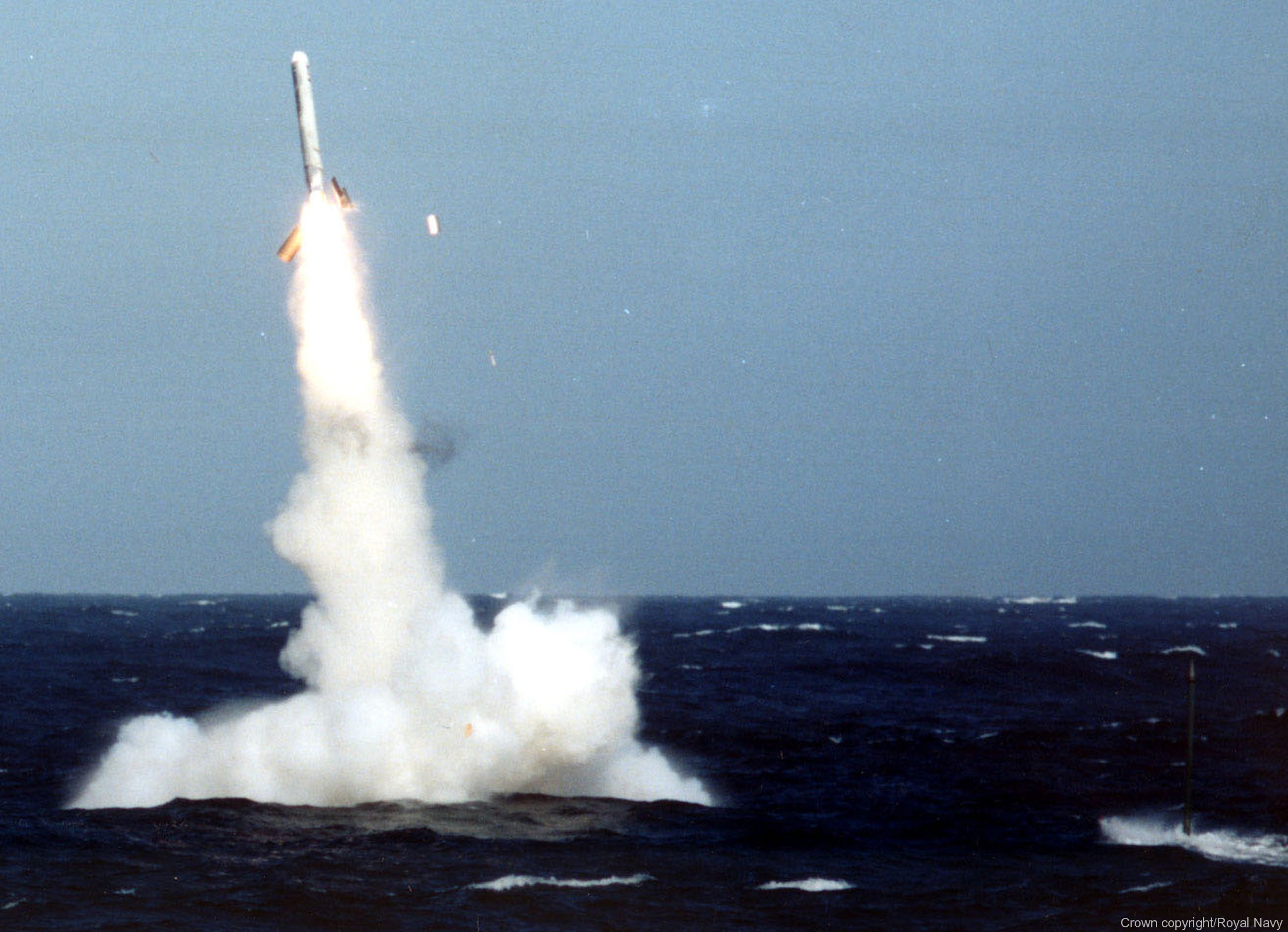 UGM-109 Tomahawk missile was launched from a Royal Navy Submarine 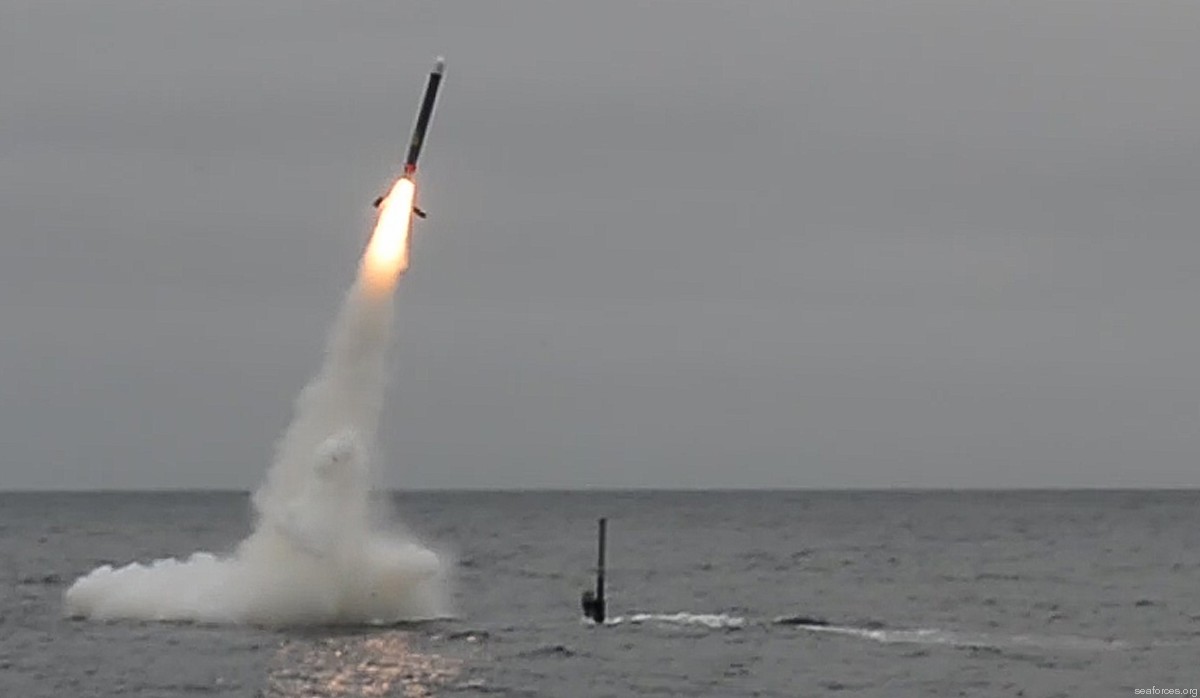 UGM-109 Tomahawk was launched from a submerged Los Angeles class SSN 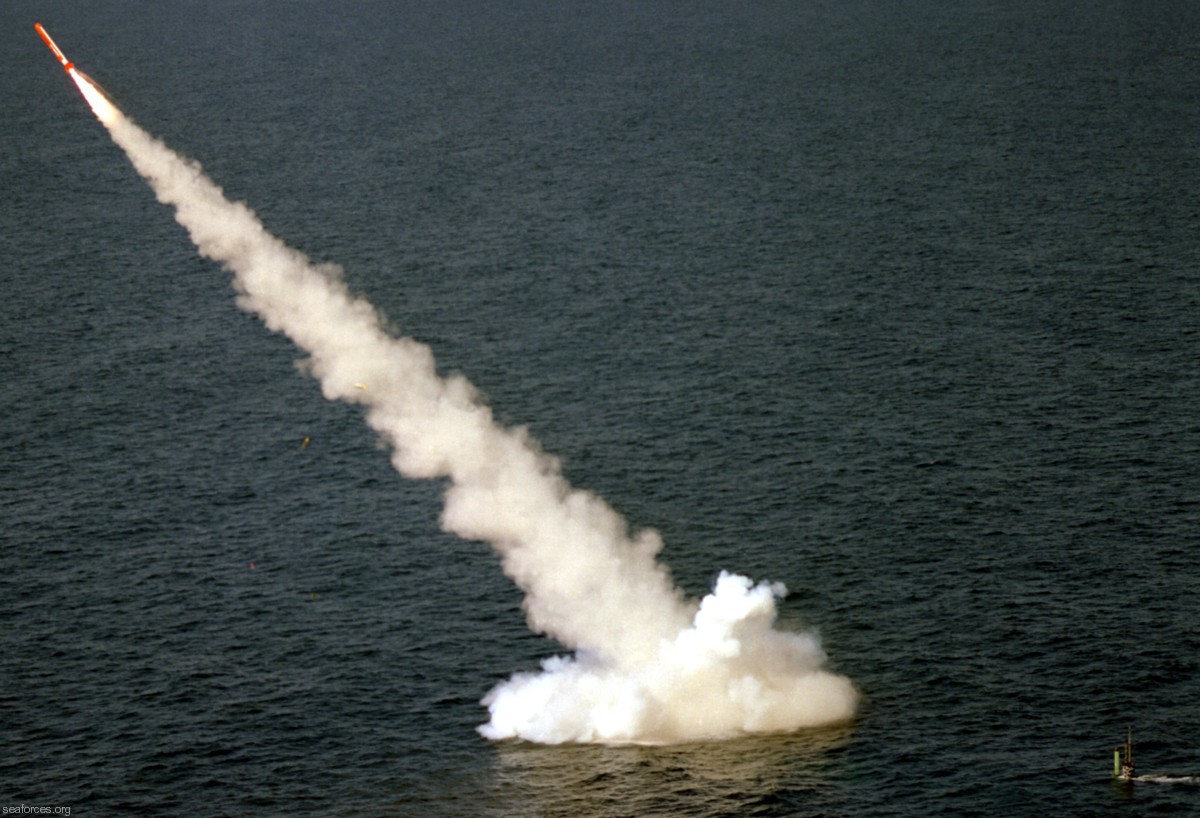 UGM-109 Tomahawk was launched from a submerged Los Angeles class SSN 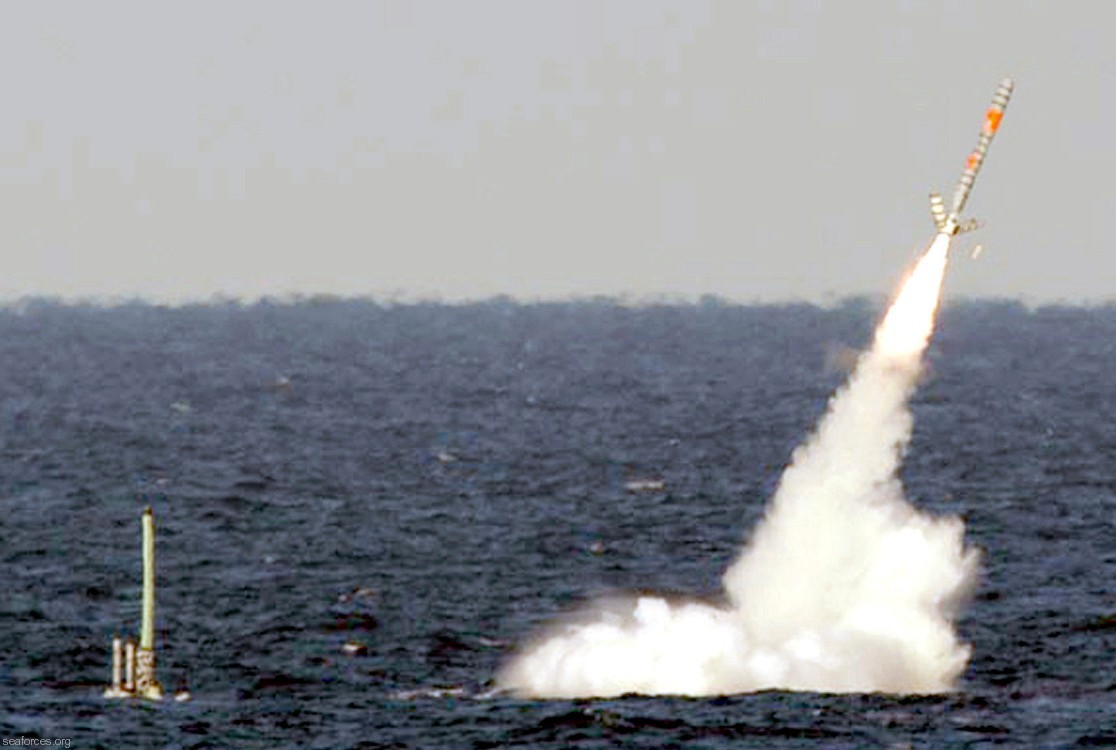 UGM-109 Tomahawk was launched from a submerged Ohio class SSGN |
||||||||||||||||||||||||||||||||||||||||||||||||||||||
| Operational history: | ||||||||||||||||||||||||||||||||||||||||||||||||||||||
|
United States Navy: In the 1991 Gulf War, 288 Tomahawks were launched, 12 from submarines and 276 from surface ships. The first salvo was fired by the Destroyer USS Paul F. Foster on January 17, 1991. The attack submarines USS Pittsburgh and USS Louisville followed. On 17 January 1993, 46 Tomahawks were fired at the Zafraniyah Nuclear Fabrication Facility outside Baghdad, in response to Iraq's refusal to cooperate with UN disarmament inspectors. One missile crashed into the side of the Al Rasheed Hotel, killing two civilians. On 26 June 1993, 23 Tomahawks were fired at the Iraqi Intelligence Service's command and control center. On 10 September 1995, USS Normandy launched 13 Tomahawk missiles from the central Adriatic Sea against a key air defense radio relay tower in Bosnian Serb territory during Operation Deliberate Force. On 3 September 1996, 44 cruise missiles between UGM-109 and B-52 launched AGM-86s, were fired at air defence targets in Southern Iraq. On 20 August 1998, 79 Tomahawk missiles were fired simultaneously at two separate targets in Afghanistan and Sudan in retaliation for the bombings of American embassies by Al-Qaeda. On 16 December 1998, 325 Tomahawk missiles were fired at key Iraqi targets during Operation Desert Fox. In early 1999, 218 Tomahawk missiles were fired by US ships and a British submarine during Operation Allied Force against key targets in the Federal Republic of Yugoslavia. In October 2001, approximately 50 Tomahawk missiles struck targets in Afghanistan in the opening hours of Operation Enduring Freedom. During the 2003 invasion of Iraq, more than 802 Tomahawk missiles were fired at key Iraqi targets. On 3 March 2008, two Tomahawk missiles were fired at a target in Somalia by a US vessel during the Dobley airstrike, reportedly in an attempt to kill Saleh Ali Saleh Nabhan, an al Qaeda militant. On 17 December 2009, two Tomahawk missiles were fired at targets in Yemen. One of the targets was hit by a TLAM-D missile. The target was described as an 'alleged Al-Qaeda training camp' in al-Ma’jalah in al-Mahfad a region of the Abyan governorate of Yemen. Amnesty International reported that 55 people were killed in the attack, including 41 civilians (21 children, 14 women, and six men). The US and Yemen governments refused to confirm or deny involvement, but diplomatic cables released as part of United States diplomatic cables leak later confirmed the missile was fired by a US Navy ship. On 19 March 2011, 124 Tomahawk missiles were fired by U.S. and British forces (112 US, 12 British) against at least 20 Libyan targets around Tripoli and Misrata. As of 22 March 2011, 159 UGM-109 were fired by US and UK ships against Libyan targets. On 23 September 2014, 47 Tomahawk missiles were fired by the United States from USS Arleigh Burke and USS Philippine Sea, which were operating from international waters in the Red Sea and Persian Gulf, against ISIL targets in Syria in the vicinity of Raqqa, Deir ez-Zor, Al-Hasakah and Abu Kamal, and against Khorasan group targets in Syria west of Aleppo. On 13 October 2016 five Tomahawk cruise missiles were launched by USS Nitze at three radar sites in Yemen held by Houthi rebels in response to anti-ship missiles fired at US Navy ships the day before. On 6 April 2017, 59 Tomahawk missiles were launched from USS Ross (DDG-71) and USS Porter (DDG-78), targeting Shayrat Airbase near Homs, in Syria. The strike was in response to a chemical weapons attack, an act allegedly carried out by Syrian President Bashar Al-Assad. U.S. Central Command stated in a press release that Tomahawk missiles hit "aircraft, hardened aircraft shelters, petroleum and logistical storage, ammunition supply bunkers, defense systems, and radars". Initial U.S. reports claimed "approximately 20 planes" were destroyed, and that 58 out of the 59 cruise missiles launched "severely degraded or destroyed" their intended target. A later report by US Secretary of Defense James Mattis claimed that the strike destroyed about 20% of the Syrian government's operational aircraft. Syrian state-run media claimed that nine civilians, including four children living in nearby villages were killed and another seven wounded as a result of the strike after missiles fell on their homes, but The Pentagon said civilians were not targeted. According to the satellite images the runways and the taxiways have been undamaged and combat flights from the attacked airbase resumed on 7 April a few hours after the attack, although U.S. officials did not state that the runway was a target. An independent bomb damage assessment conducted by ImageSat International counted hits on 44 targets, with some targets being hit by more than one missile; these figures were determined using satellite images of the airbase 10 hours after the strike. However, the Russian defense ministry contends that the combat effectiveness of the attack was extremely low; only 23 missiles hit the base destroying six aircraft, and it did not know where the other 36 landed. Russian television news, citing a Syrian source at the airfield, said that nine planes were destroyed by the strikes (5 Su-22M3s, 1 Su-22M4, and 3 Mig-23ML) and that all planes were thought to have been out of action at the time. Al-Masdar News reported that 15 fighter jets were damaged or destroyed and that the destruction of fuel tankers caused several explosions and a large fire. However, Lost Armour's online photographic database, for vehicle losses in the War in Syria, has images of 10 destroyed aircraft at Shayrat airbase. Some observers conclude that the Russian government - and therefore also the Syrian government - was warned and Syria had enough time to move most of the planes to another base. The Syrian Observatory for Human Rights said the strike damaged over a dozen hangars, a fuel depot, and an air defense base. On April 14 2018, the US launched 66 Tomahawk cruise missiles at Syrian targets near Damascus and Homs, as part of the 2018 bombing of Damascus and Homs. These strikes were done in retaliation for alleged Douma chemical attack. The United States Department of Defense said Syria fired 40 defensive missiles at the allied weapons but did not hit any targets. The Russian military said that Syrian air defenses shot down 71 of the 103 missiles launched by the US and its allies. Royal Navy: In 1995 the US agreed to sell 65 Tomahawks to the UK for torpedo-launch from their nuclear attack submarines. The first missiles were acquired and test-fired in November 1998; all Royal Navy fleet submarines are now Tomahawk capable, including the Astute-class. The Kosovo War in 1999 saw the Swiftsure-class HMS Splendid become the first British submarine to fire the Tomahawk in combat. The UK subsequently bought 20 more Block III to replenish stocks. The Royal Navy has since fired Tomahawks during the 2000s Afghanistan War, in Operation Telic as the British contribution to the 2003 Iraq War, and during Operation Ellamy in Libya in 2011. In April 2004, the UK and US governments reached an agreement for the British to buy 64 of the new generation of Tomahawk missile - the Block IV or TacTom missile. It entered service with the Royal Navy on 27 March 2008, three months ahead of schedule. In July 2014 the US approved the sale to the UK of a further 65 submarine-launched Block IV's at a cost of US$140m including spares and support; as of 2011 the Block III missiles were on British books at £1.1m and the Block IV at £0.87m including VAT. The Sylver Vertical Launching System on the new Type 45 destroyer is claimed by its manufacturers to have the capability to fire the Tomahawk, although the A50 launcher carried by the Type 45 is too short for the weapon (the longer A70 silo would be required). Nevertheless, the Type 45 has been designed with weight and space margin for a strike-length Mk41 or Sylver A70 silo to be retrofitted, allowing Type 45 to use the TLAM Block IV if required. The new Type 26 frigates will have strike-length Mk41 VLS tubes. SYLVER user France is developing MdCN, a version of the Storm Shadow/Scalp cruise missile that has a shorter range but a higher speed than Tomahawk and can be launched from the SYLVER system.
|
||||||||||||||||||||||||||||||||||||||||||||||||||||||
|
|
seaforces.org
|
Weapon Systems
start page
| |
